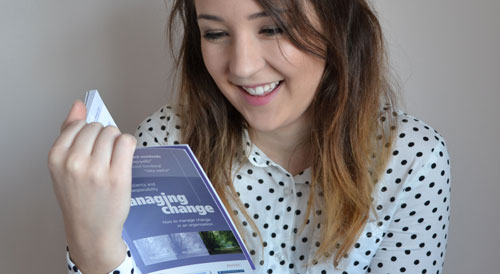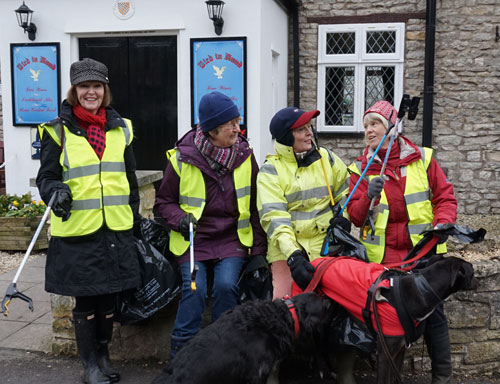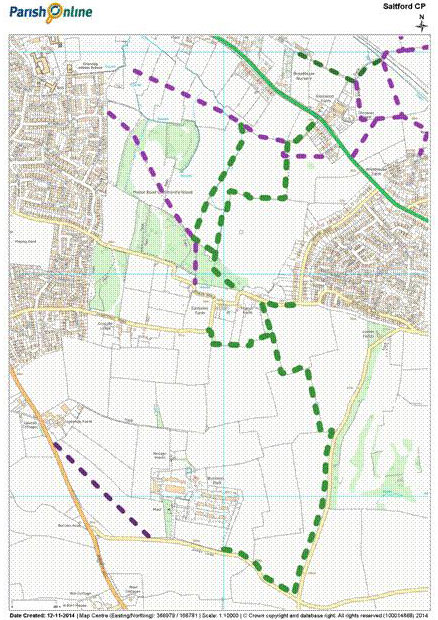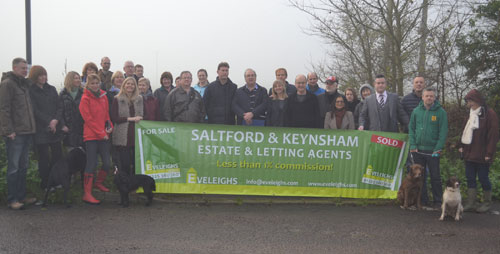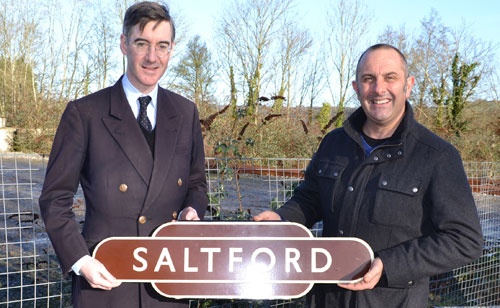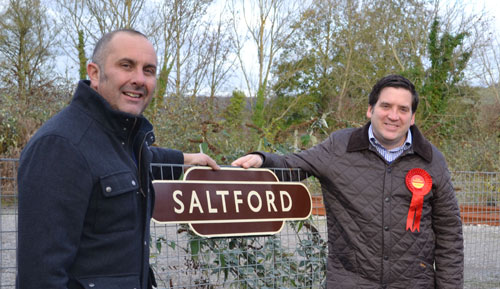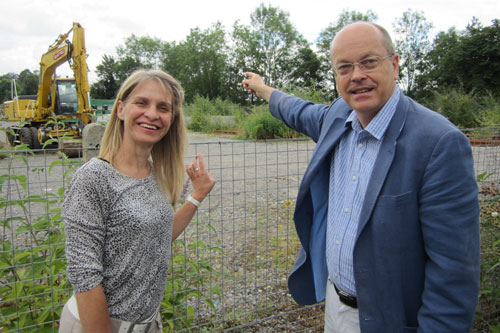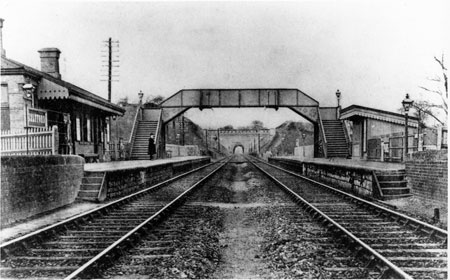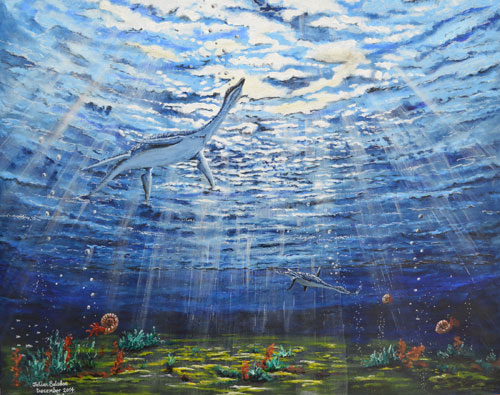|
Saltford Environment Group
|
| Home | About Us | News | Website Contents & Links | Contact |

|
SEG Home > News List > 2015 Archive 2015 (Archive)Here we have published the news stories from our monthly newsletters of 2015. As this is an archive some links may no longer connect due to changes in web page URL addresses etc.
Click on each story headline link or scroll down the page:-December 2015:Station Campaign and Parish Council addresses B&NES Scrutiny Panel (16 Nov) West of England Joint Transport Study (9 Nov - 29 Jan) Our renewable energy future (& Paris climate summit) Saltford Station Campaign scoops national award Surviving winter in Saltford for over 3,000 years Have your say on parking in Saltford Rail electrification & Saltford - briefing event 15 Dec & further info. November 2015:Fairtrade for Saltford Steering Group Relax into the festive season (make your own garlands with us on 20th Nov) Zoos - Past, Present & Future (13th November, Keynsham) Let's keep Saltford 'clean and tidy' together Our local geology: Rock clearance day, 20th November Bank of England Governor speaks out on financial risks caused by climate change Planting tree species ecologically appropriate to Saltford Saltford's history and the mystery of the Piltdown Man hoax October 2015:Wombles Update and October activity Could you be our volunteer Auditor? Countdown to COP21 Paris climate change summit Upcycling Craft Group - Thursday 15th October Saltford Air Quality Action Plan consultation 14th Sept - 4th Dec Plastic bag charging can be your catalyst to start making a difference Saltford Santa Dash, 6th December September 2015:Saltford Wombles: keeping on top of litter in September Saltford's History six months on Saltford Upcycling Craft Group - 17th September B&NES Energy at Home and the end of the Green Deal Grow some of Saltford's natural heritage in your garden - Free offer to members No onshore gas exploration in the Saltford-Keynsham area for now Great British Bee Count results are out Open for business, even in severe weather? August 2015:Discovering more about SEG's History of Saltford project Hummingbird Hawk-Moths in Saltford A cleaner, solar powered future? Can we do more to involve our youngest residents? Fairtrade: Big Things from Little Acorns Saltford Wombles: keeping on top of litter in August When drinking Saltford's water could be fatal... July 2015:Saltford Wombles to tackle litter on the A4 (11th July) Toxic Giant Hogweed in Saltford: Health Warning Re-signalling project at Saltford station site Hear how SEG's History of Saltford project is revealing the unknown Saltford Carthaginian Coin proves popular with festival visitors Industrial nations agree to phase out fossil fuels "Mayflower" steams through Saltford and we capture it on video UN calls for rethink of global financial system Need help obtaining free local horse manure for your garden? June 2015:Saltford Upcycling Craft Group - June activities New Parish Council votes unanimously to back the re-opening of Saltford station Saltford's new Parish Council elects leadership team and adopts 'Saltford 2020' vision Can you readily identify the Swifts and Swallows over Saltford? Railway path habitat restoration project progress and situation report 7th May election results for Saltford (B&NES and Parish Council) Saltford Festival programme - see and learn about the Saltford Carthaginian Coin! "I love Saltford" mugs also available from Saltford Convenience store May 2015:Saltford Wombles to tackle litter along the A4 (9th May) New season fashions, new jewellery See the BBC Points West launch of the Saltford Carthaginian Coin on our website Fracking in our local area and our General Election Parliamentary Candidates Canoe Avon help clean up our river Toxic Giant Hogweed reappears in Saltford The Great British Bee Count, 1st - 31st May B&NES Council Elections on 7th May: Questions from SEG Launch of the Saltford Carthaginian Coin (300 - 264 BC) Free horse manure for Saltford's gardeners Saltford Brass Mill will re-open on Saturday 9th May April 2015:Local actor from Poldark to help tell story of what was lost in Saltford 2,300 years ago... The History of Saltford goes live! The 2015 Big Garden Birdwatch results are out Saltford Upcycling Craft Group workshop, 16th April Saltford Festival 13 - 21 June Pictures of solar eclipse over Saltford, 20th March Want to be trained to become an Otter surveyor? Election 2015: Nine Meals from Anarchy 20mph speed limit for Saltford residential roads from 30th March Annual Saltford Dawn Chorus Walk, 26th April National Bird Campaign awaits YOUR vote! William got his mother for Mother's Day a fabulous "I love Saltford" mug! Saltford Wombles - monthly sessions March 2015:Unique Mother's Day gift from SEG! Giving nature a home in your garden Thank you for your Waitrose tokens Saltford Wombles - volunteers required for litter pick 7th March & other sessions B&NES Council votes to fund next steps for Saltford station The importance of healthy soils Something new from something old Fracking latest: Government to allow fracking under protected sites Election 2015: Greener Britain Seven reasons cheap oil can't stop renewables now 2014 was one of the warmest years globally on record Managing change towards improved environmental performance New Treasurer appointed for SEG NOTE: Our newsletters for January and February 2015 were sent by email and not posted on our website. For the record we have published just a few key stories from those two newsletters here. February 2015:Saltford Wombles tackle litter along the The Shallows, 7th Feb Sparrows losing out to loft insulation Fracking: Infrastructure Bill watered down Environmental Audit Committee calls for halt to fracking Reopening of closed permissive paths to south and west of the village Fracking: Shale gas revolution stalling? SEG website attracting huge interest January 2015:Election 2015: Greener Britain Cross-party support for Saltford station 45th anniversary of station closure Preparing Saltford for climate change Saltford station - latest news as more progress made Plesiosaurs that swam around Saltford Europe's oceans of litter remind us to re-use our shopping bags Stories start here:-December 2015:Station Campaign and Parish Council addresses B&NES Scrutiny Panel (16 Nov)On 16th November Chris Warren for the Station Campaign and Duncan Hounsell as Chair of the Parish Council spoke in public time to B&NES Council's cross-party Communities, Transport and Environment Policy Development and Scrutiny Panel to inform them about Saltford Station and to seek their assistance in their scrutiny role. They asked that there be no unnecessary delay or insufficient pressure from B&NES Council on the half-hourly timetable question and that consultants be commissioned to take the project forward to GRIP stages 3 and even 4. They made the point that this not only about providing Saltford's commuters a gateway to the half-hourly Metro West services, but also playing a part in reducing road traffic into Bath and contributing to the economic development of this area. The democratic mandate given in the Parliamentary, Council and Parish Council elections last May to reopen the station was highlighted and also the point that B&NES urgently required solutions to its chronic transport problems, especially with Bath's new Enterprise Zone and the riverside development nearing completion. Without alternatives to the private car, Bath was close to becoming stifled by traffic and its detrimental effect on air quality leading to public health issues. West of England Joint Transport Study (9 Nov - 29 Jan)The West of England's four local authorities (including B&NES) have launched a public consultation as part of the Joint Transport Study, which will inform high level strategy and the delivery of major transport schemes throughout the area until 2036. B&NES Council, Bristol City Council, North Somerset Council and South Gloucestershire Council are preparing the study in parallel with the West of England's Joint Spatial Plan, which is looking at how to meet the need for housing and employment space up to 2036. The Joint Transport Study will be completed by the end of 2016. At this early stage they would like the views of people who live, work and travel in the West of England about the objectives of the study; what the existing transport issues are in our area; and what schemes they would like considered by the study. These are sought by 29 January 2016. The study provides you with a chance to tell the four local authorities how you think transport should be provided in the West of England over the next 20 years. You can view the Joint Transport Study including a summary and make comments using an online survey from this link: Joint Transport Study. Our renewable energy future (& Paris climate summit)The International Energy Agency's 2015 edition of its flagship annual report, World Energy Outlook, was published on 10th November. Whilst observing clear signs that the energy transition to renewables is underway, the IEA warned that strong direction was needed from the COP21 Paris climate summit (30th November to 11th December 2015). Renewables contributed almost half of the world's new power generation capacity in 2014 and have already become the second-largest source of electricity (after coal). Renewables are set to become the leading source of new energy supply from now to 2040. The IEA advises that the lower oil prices currently experienced is the moment to reinforce the world's capacity to deal with future energy security threats and not mistakenly relax our attention to energy security. The oil market is in unfamiliar territory: facing a well-supplied market and lower prices, producers have cut operating costs and investment plans. The IEA predicts the following global trends:
The IEA website is at www.iea.org. For keeping up with the discussions and decisions made during the COP21 climate summit in Paris, the Guardian newspaper website provides comprehensive coverage which you can access from this link: News and comment from the Guardian. FOOTNOTE Oil-rich countries are choosing renewablesSome welcome news from the International Renewable Energy Agency (Irena): oil-rich countries are choosing renewables as a means to create jobs, increase GDP and improve livelihoods whilst also reducing carbon emissions. Perhaps the UK and other Governments could learn from this approach as delegates gather for the COP21 climate summit in Paris. According to Irena (www.irena.org), as reported on the Guardian website on 19th November, dramatically falling solar photovoltaic costs, and forward-thinking commitments by regional governments, are changing the economic equation in favour of solar power. A solar photovoltaic tender in Dubai earlier this year resulted in a record-low price of $0.06 per kilowatt hour - cheaper than domestically produced gas generation. Jordan's recent tender outcome locked in power prices of between $0.06-0.08. For oil-producing nations that use a substantial share of the gas or oil they produce for power generation, solar is increasingly the quickest, lowest-risk investment to add export capacity and revenue while satisfying their own rapid growth in demand for electricity. This shift is causing huge development and investment across the oil-producing region. For example Morocco is building the world's largest concentrated solar power plant, which will provide half the country's energy by 2020. The UAE is building what could eventually be one of the world's largest solar photovoltaic plants. Additional projects are in progress in Egypt, Jordan and Saudi Arabia. Saltford Station Campaign scoops national award
Saltford Station Campaign has received a national award at the Railfuture conference "Rail Resurgence in the West of England" held at the Mercure Hotel, Redcliff Hill, Bristol, on 7th November. Railfuture is the leading national pro-rail campaigning organisation. The campaign received the Oliver Lovell Award (in memory of the Cotswold Line Promotion Group founder who died in 2013) for "Best New Group" and this was presented to Chris Warren of the Saltford Station Campaign by Christian Wolmar, President of Railfuture. Chris Warren said "I was absolutely delighted to receive this award on behalf of the Saltford Station Campaign. To be recognised by Railfuture is just reward for all our hard work. This award gives the campaign a further boost. I ask the new B&NES Council to take the re-opening of the station to the next stage of project development without undue delay." Cllr Duncan Hounsell, Chair of Saltford Parish Council, said "I congratulate the Saltford Station campaigners on this national award. The Parish Council fully supports the re-opening of Saltford Station which would give villagers a gateway to the half-hourly services of the Metro West rail project." Judges' comments: "Campaign shows a sound knowledge of the rail industry and grasp of technical detail, good engagement with stakeholders' buy-in, cross-party support, a strong environmental message, and a good chance of success." To see the Saltford Station Campaign web pages on SEG's website click here: link >> Discovering Roman Saltford
Due to the variety of Roman artefacts (bronze coins, pottery sherds, roof tile fragments, etc.) found in the field on the south side of Saltford where a Roman coffin was found in 1948 and other archaeological and geological factors, there is good reason to believe that evidence of a Roman villa or farmhouse is there waiting to be found. Between 27 October and 4 November 2015 Bath and Camerton Archaeological Society (BACAS) supported by volunteers from SEG carried out a geophysics survey for a significant section of the field. The survey data has been downloaded onto a computer and, subject to detailed expert analysis, it appears that the survey team may have identified some roundhouses (possible evidence of roundhouses was found by BACAS on the northern edge of the golf club grounds in 2013) and, more importantly for our Roman searches, the apparent corner of a building. These results are certainly exciting for SEG's History of Saltford project as we gradually piece together previously unknown aspects of Saltford's ancient past. When the expert analysis has been completed and the survey findings report produced we shall publish further information. In the meantime SEG wishes to thank and pay tribute to BACAS and all the volunteers involved who worked so patiently and supportively on the 4 day survey; their efforts were not wasted! We are also grateful to the farmer, Adam Stratton, for giving permission for this work to be carried out on his land. Details of the Roman coffin discovery in 1948 with photographs can be found on our Online Museum (link). Footnote 1: Equipment used for the geophysics survey Two types of geophysics equipment were used over numerous grids marked out by volunteers, a magnetometer and a resistance meter (x2 to save time). The magnetometer measures anomalies in the Earth's magnetic field whereas the twin probe resistance meter works by injecting a small electrical current into the ground and calculating the resistance to it that is affected by buried stone walls etc. The resistance readings complement the magnetometer readings which detect minute magnet field anomalies that can be made by buried archaeology. Footnote 2: Metal detection surveys With the landowner's permission for each survey, the field has been the subject of several metal detection surveys in recent years and these have revealed some bronze Roman coins, and other small bronze items that can be found in our history project's Online Museum. Due to those surveys the discovery of further coins etc. of any particular new significance or value is not anticipated. Surviving winter in Saltford for over 3,000 yearsby Debbie Wilkes Next time you're adjusting your central heating, spare a thought for our village ancestors struggling to keep warm in their roundhouses 3,000 years ago.
As reported in the previous story, a damp and chilly few days in late October and early November saw our very own local Time Team surveying a field in the southern part of Saltford. Unexpected evidence at the bottom of the field we surveyed was that of possible roundhouses from the late Bronze Age (1,100 to 800 BC) or Iron Age (800 BC to 43 AD). We can add this to possible evidence of roundhouses that has already been found on land belonging to the golf club, and a dynamic picture emerges of human struggle against the elements and rivals competing for food and land, right here on our doorstep for thousands of years. Keeping warm would have been just one of their life-threatening challenges.
We know that 'necessity is the mother of invention' (Plato, ancient Greek philosopher), and the evidence shows that this was a period of great evolution and innovation - far more dramatic than our advancements today, and demanding greater courage. Their progress would have been far slower and more painful, learning inch by inch by experimentation, and with mistakes being potentially fatal. Food would have been the top priority and, as Caesar is said to have reported, we had already developed into a nation of small farms by the time the Romans arrived. We first learned how to forage and hunt, and then to grow crops and tend animals, but seasonal food would only be half of the story. Surviving harsh winters would have forced us to be inventive and to experiment with how to keep food safe and palatable. Long before chimneys were devised, the smoke that rose through the thatched roof of a roundhouse provided the means to preserve by smoking, and honey and fat were also used. It's fascinating to speculate - how did they work out, on their own, that honey would preserve food? Evidence from around the UK shows that we worked out different solutions in different parts of the country, which confirms how isolated our ancestors would have been - very few opportunities existed to learn from others who were facing the same challenges. In our era of global sharing it's impossible to imagine facing life and death challenges daily with just the wisdom inherited from parents and very few passing traders. It is indeed possible that occasional traders would have passed through Saltford in those early days; a speculation that we enjoyed after the discovery of our Cathaginian coin (c.300 BC) near the river. We can only wonder whether they would have exchanged culinary tips and other survival lessons as they huddled around fires within the round houses that they encountered. They may have gathered together for the winter solstice - some experts believe that the doors of some round houses were positioned precisely for this spiritual celebration. As the Iron Age progressed, the more fortunate would go on to make pottery and textiles, and take more great steps towards security, status and comfort. It's deeply thought-provoking to imagine a direct thread between those 'primitive' ancestors, whose paths we still follow here in Saltford, and our modern day comfort and powerful technology. To quote a comparatively modern innovator, Isaac Newton in 1676; 'If I have seen further, it is by standing on the shoulders of giants'. Next time you walk around Saltford's rural footpaths, do take a moment to recognise the countless small, courageous steps taken by our less privileged ancestors that have led us to where we are today, enjoying warmth and security in our homes. Check out our history project Timeline for more information on how life in our village has progressed through the ages. Have your say on parking in SaltfordParking in and around Saltford generates much discussion and debate among residents. Saltford Parish Council has decided to conduct a "conversation" with residents of Saltford, local businesses, and commuters to Saltford to seek information, views, and suggested solutions to parking issues in and around Saltford. The objective is for the Parish Council to be in a position to put forward a set of constructive proposals in spring 2016 to B&NES Council and other bodies for possible action. Highways and on-street parking are the responsibility of B&NES Council. The Parish Council recognises that people do need to park, that no householder can claim the right to sole access to the parking space outside their home, and that problems should not be simply moved from one street or part of a street to another. The Parish Council has no predetermined view on parking issues other than a desire to improve road safety and find workable solutions to parking issues. Practical suggestions for potential solutions to the issues experienced in Saltford from encouraging less car use and the provision and control of short/long term parking to changing parking behaviour are sought by the Parish Council between now and the end of February 2016. More details including how to submit your views can be found on the Parish Council website at www.saltfordparishcouncil.gov.uk. Rail electrification & Saltford - briefing event 15 Dec & further informationNetwork Rail say that the recently confirmed government funding for the Great Western Main Line heralds the biggest investment in the railway since it was built by Brunel. They claim this will mean a more reliable service, more seats and better station facilities. Network Rail will be holding a Saltford event to give stakeholders/lineside neighbours a briefing on the planned work that Network Rail will be undertaking on the Great Western railway between Keynsham and Bath next Easter (02/04/16 - 11/04/16). The event will be on Tuesday 15 December 17.30 - 19.30 at St Mary's Church Hall. The Network Rail website with more information concerning this work is at www.networkrail.co.uk/great-western-route-modernisation/. November 2015:Fairtrade for Saltford Steering GroupThe Saltford Fairtrade Group has gone from strength to strength gaining our first Fairtrade Village status renewal this year and organising the Fairtrade refreshments served at the Saltford Festival, but there is no time to rest on our laurels. We are always looking for new ideas of spreading the Fairtrade ethos of better prices, decent working conditions, local sustainability, and fair terms of trade for farmers and workers in the developing world. Supporting and encouraging new and local Fairtrade supporters is also a major priority for us. If you think that this is something worthwhile and would enjoy helping us we are looking for new steering group members to join us. We are a small friendly group who meet in members' homes every couple of months to plan events and visits, all served up with Fairtrade refreshments. You can contact us by email to saltfordfairtrade@hotmail.co.uk or ring Frances Eggbeer on 07789--528834. Our next meeting is on 10th November where you would be warmly welcomed when we will be planning our Christmas Market stall. Find our more about of activities on our SEG web page (link). Relax into the festive season (make your own garlands with us on 20th Nov)November's Saltford Upcycling Group session has changed days this month, but it's sure to bring a smile to your face. Using natural materials that you can find in your garden or the hedgerows we will be creating Christmas garlands. These can be decorated using fir cones, beech nuts and berries etc. or we can create something unique using things you may throw away or recycle. Join us for a free, fun evening on Friday 20th November, 7-9pm at Signs of Saltford (workshop entrance), 559 Bath Road, Saltford. If you would like to bring along some flexible branches to make the foundation of your garland or any decorations you can forage please do so, but we will also have some for you to use on the evening. You can ring Frances Eggbeer on 07789--528834 for more information. Tina and Frances are looking forward to meeting you. Zoos - Past, Present & Future (13th November, Keynsham)Simon Garrett, Head of Learning at Bristol Zoo Gardens, will be leading a special themed evening organised by the Avon Wildlife Trust with extra activites and games for all the family. This will be held at Wellsway School, Chandag Road, Keynsham from 7.00pm - 9.00pm on Friday 13th November. Details can be found on the Avon Wildlife Trust from this link. Let's keep Saltford 'clean and tidy' together
We hope you have noticed that the amount of litter spoiling Saltford is considerably less than it has been in the past. The existence of litter can attract more litter but the efforts by Saltford Wombles and others who share a common desire to keep Saltford clean and tidy does make a real difference. A big "thank you" to everyone who takes the trouble to pick up litter. If the overwhelming majority of us living in Saltford see it as our individual responsibility to take ownership of the road we live in and neighbouring footpaths by clearing any litter we find, the job is done. Just spending 5-10 minutes each week to check for and clear litter or simply removing it when we see it can make all the difference. The feel good factor from removing rubbish on our streets provides its own reward! Saltford Wombles will continue to target public areas with organised litter-picks and can lend litter-picking tools to anyone wishing to have a short blitz to clear an area - it's amazing how much ground one or two people can cover in just an hour. Involving our children can help them see and learn why dropping litter is so anti-social and thoughtless whilst instilling a sense of responsibility to help keep their local area clean. The effect of litter is disproportionate to the small minority of people who drop it - but a shared determination by the community to keep Saltford clean will benefit us all. If you want to borrow a litter-picking tool contact our Wombles leader Julie Sampson on tel: 07807--671--267 or by email: juliebsampson@gmail.com There will be no organised litter-picks over the winter months as the weather is so unpredictable, but do contact Julie if you want to borrow a litter-picking tool for clearing litter in a part of Saltford that is a cause of concern to you. For more information about Saltford Wombles on our "Less Waste" page click here >> Our local geology: Rock clearance day, 20th NovemberLocal geologist Simon Carpenter is organising a rock clearance day on Friday 20 November to clean up a late Triassic/White Lias site close to the Railway Path on the Saltford/Kelston border at ST 691668 (if you travel along the Railway Path towards Bath from the Bird in Hand it is on the left hand side almost opposite the Riverside Inn). The site will eventually be part of a new geology trail around Saltford and help is required. The rock outcrop occurs along the rim of the cutting and Simon needs a team to help clear ivy and vegetation covering the current rock face as well as removing a substantial talus (broken rock debris) slope that covers and obscures the lower part of the exposure. It should be possible to complete this work in one day. The session will be on Friday 20 November, meeting at 10.30am, to finish by 4.30pm. If you are interested (volunteer days can be real fun, especially if the weather is nice), please ring or email Simon to register your interest: 01373--474086 and/or simonccarpenter@gmail.com You will need to bring a spade, thick work gloves, secateurs and or loppers - some extra tools will be available if you don't have any of your own. Bring packed lunch or there is the Bird in Hand pub a short distance away. Bring lots to drink and warm clothing, if it's cold. Simon is one of the authors for our Geology page. Bank of England Governor speaks out on financial risks caused by climate change
As COP21, the 21st Conference of Parties to the UNFCCC (United Nations Framework Convention on Climate Change) to be held in Paris from 30th November to 11th December 2015 draws near, Mark Carney, the Governor of the Bank of England, spoke on the topic "Breaking the tragedy of the horizon - climate change and financial stability" at Lloyd's of London on 29 September 2015. He said that there was a growing international consensus that climate change is unequivocal. While there is always room for scientific disagreement about climate change (as there is with any scientific issue), he said that he had found that insurers were amongst the most determined advocates for tackling it sooner rather than later. Key points he made included: We don't need an army of actuaries to tell us that the catastrophic impacts of climate change will be felt beyond the traditional horizons of most actors - imposing a cost on future generations that the current generation has no direct incentive to fix. The horizon for monetary policy extends out to 2-3 years. For financial stability it is a bit longer, but typically only to the outer boundaries of the credit cycle - about a decade. In other words, once climate change becomes a defining issue for financial stability, it may already be too late. He summarised and concluded his speech by saying: Our societies face a series of profound environmental and social challenges. The combination of the weight of scientific evidence and the dynamics of the financial system suggest that, in the fullness of time, climate change will threaten financial resilience and longer-term prosperity. While there is still time to act, the window of opportunity is finite and shrinking. Others will need to learn from Lloyd's example in combining data, technology and expert judgment to measure and manage risks. The December meetings in Paris will work towards plans to curb carbon emissions and encourage the funding of new technologies. We will need the market to work alongside in order to maximise their impact. With better information as a foundation, we can build a virtuous circle of better understanding of tomorrow's risks, better pricing for investors, better decisions by policymakers, and a smoother transition to a lower-carbon economy. By managing what gets measured, we can break the Tragedy of the Horizon. The full text of Mark Carney's speech can be found on the Bank of England website from this external link. For keeping up with the discussions and decisions made during COP21, probably one of the most comprehensive web pages is on the Guardian newspaper website which you can access from this link: News and comment from the Guardian. Planting tree species ecologically appropriate to SaltfordHe that plants trees loves others besides himself When choosing trees to plant in our gardens and other areas of land in Saltford, there are some important considerations. For the long term health of the tree and to ensure the tree supports our local ecosystem (i.e. especially invertebrates many of which are undergoing widespread and complete loss in southern England and which are also important natural food for birds), it is helpful to choose native species that are appropriate for the soil and weather conditions for this part of NE Somerset. A tree may be described as native to Britain, but that does not follow that it would be suitable for Saltford. For example trees suitable for low nutrient soils such as are often found in upland, acid areas, e.g. Rowan and Silver Birch, do not naturally occur in Saltford's lowland, calcareous high-nutrient soil. The main trees to avoid are invasive non-natives with no close relatives, for example Horse Chestnut, Tree of Heaven (an especially rampant invasive that outcompetes native species - sometimes known as Tree of Hell by conservationists), and Bastard Acacia. They are chemically so different to our native trees that few native insects are able to feed on their foliage. Here we have listed native trees ecologically appropriate to Saltford (this list is not exhaustive but captures the majority of such trees). The scientific names are given to make sure the appropriate British species is chosen rather than a potentially unsuitable continental species:- Alder, Common (Alnus glutinosa)
Furthermore edible apple, pear, cherry and plum trees are close enough relatives of wild species to be of great direct value to invertebrates. Projected climate change (e.g. hotter, drier summers, wetter winters and weather extremes) are likely to make conditions less suitable for some species in the decades ahead, so risks of later tree loss can be reduced by mixed planting of species which also can help maximise resilience to pests and diseases and provide greater wildlife benefits. [Note. This is published on our Wildlife page (under Trees) so that the article and list can be found again.] Saltford's history and the mystery of the Piltdown Man hoaxIt is fascinating what we find including links to national and world events as we research Saltford's past, but this is as surprising and amusing as it gets. We just had to share this with members. The zoologist and archaeologist who studied and described the condition of the Roman skeleton (that of a 20 year old man) found in a stone coffin in Saltford in 1948 were Martin A C Hinton (1883-1961) and his wife. The wife in question was most probably Hinton's second wife, Dr Dina Portway Dobson a 'distinguished archaeologist', who he married in 1949 the year of his retirement to Wrington, Somerset; his first wife Jane had died in 1948. The description of Saltford's Roman skeleton was provided by "Mr and Mrs Martin A. C. Hinton" and published in 1950 in an official report of the find for the Somerset Archaeological Society. Martin A C Hinton, however, is one of the suspects for the infamous paleoanthropological hoax, Piltdown Man, that was perpetrated in 1908-1912 but did not come to light as a forgery until some 40 years later in the 1950s. The link to Hinton as a possible perpetrator was not made until after his death. Piltdown Man was a composite of an altered human skull and ape jawbone planted, and subsequently 'discovered', at a dig in Piltdown, Sussex, in 1908-12 and presented as a missing link between man and ape. A trunk belonging to Hinton left in storage at the Natural History Museum and found in 1970 contained animal bones and teeth carved and stained in a manner similar to the Piltdown finds. This was some 9 years after Hinton's death and subsequently raised questions about his involvement in the deception. One theory concerning Hinton's involvement is as follows (source: http://www.britannica.com/topic/Piltdown-man#ref374472):- In 1996, two decades after a trunk marked with the initials M.A.C.H. had been discovered in storage at the British Museum (Natural History), bones found in the trunk were analysed. The British paleontologists Brian Gardiner and Andrew Currant found that they had been stained in the exact same way as the Piltdown fossils. The trunk apparently had belonged to Martin A.C. Hinton, who became keeper of zoology at the British Museum (Natural History) in 1936. Hinton, who in 1912 at the time of the original discovery was working as a volunteer at the museum, may have treated and planted the Piltdown bones as a hoax in order to ensnare and embarrass Arthur Smith Woodward. Woodward was keeper of the British Museum's paleontology department and it was he who announced the find at a meeting of the Geological Society of London in 1912. Apparently Woodward had rebuffed Hinton's request for a weekly wage. It is presumed that Hinton used the bones in the steamer trunk for practice before treating the bones used in the actual hoax. The Piltdown hoax is infamous for the attention paid to the issue of human evolution, and the length of time (40 years) that elapsed from its original discovery to its full exposure as a forgery. The identity of the Piltdown forger remains unknown, but suspects have included Martin A. C. Hinton, Charles Dawson, Pierre Teilhard de Chardin, Arthur Keith, Horace de Vere Cole and even Arthur Conan Doyle. SEG is not claiming that Martin A C Hinton was a perpetrator of the hoax but is reproducing information already in the public domain concerning his possible involvement in this mystery. An article in the New Scientist (2.7.1981) by L. Harrison Matthews stated that Hinton during discussions with Dina Dobson and BBC producers in Bristol in c.1953 did say that he knew that the forgery had been done by someone in the British Museum (Natural History) but that he could not reveal the name as the man was still alive. Martin Hinton and Dina Dobson took this secret to their graves. A photograph of the Roman skeleton found in Saltford in 1948 and that was studied by Martin Hinton can be seen along with Hinton's description of the skeleton in our history project's Online Museum (in the Roman Saltford section). Information sources: October 2015:Wombles Update and October activity
The council have very kindly cleaned up the verges on the A4 and the farmer has cut back the hedgerow so we can now see the litter again! A few Wombles who walk into Keynsham collect the litter on their way there and back. If you would like to do this please let me know so that I can lend you a litter pick and give you the correct bags to use. Manor Road seems to be a hotspot for litter! Lots of residents have complained about this so if we could all make a concerted effort into whenever we are around this area to collect litter, that would be great. Perhaps some residents would like to join the Wombles and take ownership of their road. Another area which has again come to light is the cycle path and alongside the river, which as the weeds are dying back the litter is showing its ugly head! I would like to organise a litter pick for Sat 10th October and hopefully we could start tackling this area as once the autumn comes we can really hit these areas. So, see you all by the Bird in Hand for 9.30am on 10th October. More information about Saltford Wombles can be found on our "Waste" page from this link: Julie Sampson (Tel: 01225--874603) September 2015Could you be our volunteer Auditor?Saltford Environment Group is looking for a volunteer to audit our annual accounts. Although this is not a legal requirement, we would like a qualified person to review our accounts on an annual basis for the sake of good order. We currently have a modest annual income of approx. £1000 and around 50 transactions in a typical year. If you are an active or retired accountant and are able to help us with this, please contact the Treasurer, Andrew Stainer, at andrew.stainer@btinternet.com. Countdown to COP21 Paris climate change summit
From 30 November to 11 December 2015 COP21, the 21st Conference of Parties to the UNFCCC (United Nations Framework Convention on Climate Change), will be taking place in Paris when 192 nations will be meeting to produce a global agreement to cut greenhouse gas emissions. If you want further information or to follow progress on this important conference that will affect all our futures, you may find the following web links helpful:
Even if the international community manages to limit the average global surface temperature increase to the goal of no more than 2°C above the pre-industrial average through cutting greenhouse gas emissions, it is already accepted by the scientific community that such an increase will lead to impacts on society and wildlife and increasing incidents of extreme weather events that we are already experiencing. This means we need to adapt to those changes and SEG seeks to help Saltford meet that challenge by providing advice and guidance for householders and local businesses on our climate change page >> Saltford Weather Station
With the mellowness of autumn upon us, this is a reminder, especially for our newer members who may not be aware of this, that our climate change page includes an online Saltford weather station. This can be useful for picking up the 5-day local weather forecast at a glance, check for flood warnings, and see the rising or falling river level in Saltford. Upcycling Craft Group - Thursday 15th October
Halloween Magic! A fun session making things for Halloween from items we would normally throw away. Our group is growing so come along and join us on 15th October, 7-9pm at Signs of Saltford, 559 Bath Road for a coffee/tea - its free!! Contact: Tina - 01225--874037 Saltford Air Quality Action Plan consultation 14th Sept - 4th DecB&NES has launched a consultation on a draft Air Quality Action Plan for Saltford and comments are sought by 4th December. Nitrogen dioxide from road traffic in Saltford is the only pollutant that exceeds the government's National Air Quality Objectives as an annual average. As a result an Air Quality Management Area (AQMA) has been declared and B&NES is seeking feedback on the measures it is proposing to include in the Action Plan for Saltford. The Saltford Air Quality Management Area includes the building facades on either side of the A4 road and extends east along the Bath Road from its junction with Beech Road until 150 metres south of the Glen. Actions proposed in the plan include: tree planting on the A4 to deflect and collect pollutants; advice to land owners on planting that protects from air pollution; electric vehicle charge points for each new property across the district; Community Air Quality Group; Electric Zone - signed entrance to AQMA encouraging switch into electric mode for hybrids; secure cycle storage at each new property; lobby government for incentivising uptake of non-diesel cars; and continue feasibility work for reopening of a station at Saltford. You can view the action plan and submit your own comments online from this link: www.bathnes.gov.uk/consultations/saltford-air-quality-action-plan An event for the Saltford Air Quality Action Plan will be held by B&NES on 14th October between 4pm and 8pm at Saltford Hall (Avon Room). After the consultation period a report will be produced and the final Action Plan developed. Plastic bag charging can be your catalyst to start making a differenceWith all waste or pollution, With the introduction in October of a law to require retailers to charge 5p for single-use plastic bags, this is a timely reminder of the need to reduce the waste we generate as well as making a move to greater use of re-usable shopping bags. According to the Government, in 2013, supermarkets gave out over 8 billion single-use carrier bags across the UK. That is nearly 130 bags per person. This equates to about 57,000 tonnes of single-use carrier bags in total over the year. 100,000 dolphins, whales, seals and turtles are killed every Discarded plastic bags are a very visible form of littering and can cause injury to wildlife. With large amounts of litter including that made from plastic entering the sea each year, the mass of plastic debris in the world's oceans, including the microscopic breakdown products from plastics, is steadily increasing - often with fatal consequences for countless sea creatures. Toxic chemicals are absorbed by plastic and these pollutants accumulate in the food chain, resulting in an even higher concentration of pollutants inside fish, including those consumed by humans (www.theoceancleanup.com, 2015). Plastic bags are used on average for 20 minutes before being The effect of plastic bags on the environment goes beyond littering and their effect on wildlife. They consume resources, including oil, in their creation. Even when disposed of responsibly, plastic bags can last for long periods of time in landfill sites. If you hate seeing litter in Saltford, in addition to regularly clearing it from the pavement areas outside your own home and, being a good neighbour, your neighbour's home, you can also engage with the litter picks organised by Saltford Wombles (or borrow a litter picking tool) and really make a difference. It is a satisfying use of time to remove litter from Saltford's public areas. Our Less Waste page provides tips and ideas for reducing the waste in our homes and businesses and how to get involved with Saltford Wombles. Saltford Santa Dash, 6th December
It seems too early to be thinking about Christmas activities, but you may wish to be aware of (and start training for?) this year's Saltford Santa Dash that will be held on Sunday 6th December. It will start from and finish at Saltford Sports and Social Club Sports field in Wedmore Road BS31 1BY. As previously the Mini Santa Run around the sports field, about 1 mile, will start at 10am and then at 11am the adults' 5 mile run through the lanes to Keynsham and back will commence. This year any profit from this community event will be shared between Time2Share and The Carers Centre. Further details including contacts and registration at http://saltfordsantadash.webs.com. Saltford station latest
Representatives of SEG's Saltford Station Campaign, Chris Warren (Campaign Chair), Phil Harding (SEG Chair) and Rob Taylor (Campaign team member), had a constructive first meeting with the new Conservative administration at B&NES on 1 September to discuss the next steps in taking forward the ambition to reopen Saltford railway station. Present from B&NES Council were Cllr Tim Warren (Leader of the Council), Cllr Tony Clarke (Cabinet member for Transport), and Peter Dawson (Group Manager Transport & Planning Policy). Matthew Barnes from First Great Western was also present. SEG underlined the democratic wish of Saltford for re-opening our station, expressed most recently in the Saltford Parish Council (76% turnout) and B&NES Council elections (May 2015) where all eleven elected Parish Councillors and the two elected ward Councillors for B&NES had taken a pro Saltford station stance as a priority issue in their election campaigns. The meeting agreed that a decision was required from Network Rail to show that timetable provision of a half-hourly peak time service stopping at Saltford could be made within the existing and proposed long distance InterCity services. That information should be known by Christmas 2015 in the context of the current MetroWest feasibility work and discussions. A half-hourly service at peak times was required for making the financial case for reopening Saltford station; once this is known then B&NES Council would be in a position to proceed with GRIP (Governance for Railway Investment Projects) stages 3 and 4. The notion of an alternative site for the station in the Green Belt was discussed. SEG reminded the meeting that (a) the elected Conservative B&NES Councillors and Saltford Parish Councillors were against Green Belt development, and (b) the GRIP process would ensure the optimum site was chosen. SEG also showed Network Rail's schematic plan for the signalling infrastructure work at the station site which included provision for the construction of the station (see plan above). Since the meeting with B&NES Council on 1st September Network Rail, in response to an approach by Saltford Parish Council, has said that the responsibility rests with B&NES Council as a member of the West of England Partnership for seeking inclusion of Saltford in the timetable development for MetroWest. The Parish Council and SEG have asked B&NES Council at Official and Member level to pursue this so that work on GRIP 3 and 4 can proceed without further delay. For more information on our station campaign visit our station page >> Appreciating moss
In our modern everyday lives the value of moss is not immediately obvious. Here in Saltford, close inspection of almost any handful of moss will reveal an important ecological role - that of providing shelter and humidity, a microhabitat, for a wide diversity of invertebrates. It is its position at the base of the ecological food chain that underlines the value of the moss that we see in and around Saltford. According to the Royal Horticultural Society (RHS), there are over 600 species of moss in the UK (and over 10,000 worldwide). Mosses can form large, coarse, loose, green or yellowish-green tufts, densely matted tufts, or compact green cushions. We have more moss occurring in Britain compared to other similar latitudes, for example the rest of Europe and Asia, as our humid climate provides the right growing conditions thus making our wildlife and habitat so special. Mosses can be the first to recolonise bare areas of ground recently cleared. In damp conditions, moss is like a sponge, providing semi-aquatic conditions for a whole variety of other tiny creatures, as well as a wonderfully damp nursery that allows the germination of tree seedlings and other flowering plants. When it dries out, some species of moss can be a popular nest material for a large variety of the wild birds that visit and inhabit our gardens. But moss also has an aesthetic role by helping to keep our landscapes lush and green and on closer examination, many mosses are stunningly beautiful. Perhaps before we rush to clear moss away from our gardens we should hesitate, appreciate moss for what it is, marvel at its natural beauty and allow it space to carry out its essential role in the cycle of life. Further reading (on the web)The Moss Grower's Handbook by Michael Fletcher, recommended by the RHS: http://rbg-web2.rbge.org.uk/bbs/resources/fletcher.pdf (pdf on external website) The British Bryological Society website is full of information on bryophytes (mosses, liverworts and hornworts): www.britishbryologicalsociety.org.uk September 2015:Organic SeptemberThe Soil Association has come up with 30 simple and affordable small organic changes you can make throughout September to the food and drink that you consume. To help you on your way, they will be sharing on their website a whole host of special offers and exclusive discounts from some of the biggest organic brands and they've also teamed up with some of the UK's best chefs to inspire you with ideas of what you can make using your fresh, seasonal organic produce. There are lots of ways you can get involved in Organic September, for example:
For more information including on events that are being organised, visit: www.soilassociation.org/organicseptember Saltford Wombles: keeping on top of litter in September
There will be no organised Wombles litter pick in September but if you have an hour or two to spare and wish to help keep Saltford tidy for residents and visitors by removing litter in a road or public area using our equipment do contact Julie (see next paragraph). If you have spotted a litter problem area in Saltford or if you are interested in getting involved with Saltford Wombles please contact Julie by email to: julie.sampson@barkingmad.uk.com or tel: 01225--874603. Saltford Wombles will provide, gloves, litter pickers, bin bags and high viz jackets. More information about Saltford Wombles can be found on our "Waste" page from this link: Saltford Wombles >> Saltford's History six months on
We launched SEG's History of Saltford Project six months ago, so it's a good time to give you an update. We'd like to thank everyone who has given us photos, information, ideas and artefacts to photograph - please keep them coming! We've built up a fabulous resource on the website - do take a look at what we've gathered so far. This includes:
What next?The scope for widening and deepening our research is endless - so, whatever you're interested in, as long as it's connected with Saltford we'd love to hear from you. We welcome your old photographs, maps, stories or even theories about how Saltford came to be as it is today. Much of what we are publishing fits with the school curriculum so we're keen to work with our local schools to help bring history to life. With the kind permission of landowners, survey work on trying to locate further evidence of Roman settlement in Saltford has already commenced. Bath Spa University's School of Humanities and Cultural Industries has allocated to SEG three students as project placements who have volunteered to help research different aspects of Saltford's history. We hope this will be the start of a long and fruitful relationship with our local University, schools and the wider community. At SEG we believe that only by valuing our history and origins can we gain a better understanding of the importance that we as a community should take care of the land and people that support us all. By combining a love of our village and its history with the modern media approach of our web-based resource, we can reach out to a wide audience with all the fascinating material that we capture and share. You can visit the project's web pages from this link >> SEG's History Project Production Team Saltford Upcycling Craft Group - 17th SeptemberWe have been making jewellery from our hand crafted paper beads and now we need to make some pretty gift boxes to put them in. Join our free workshop on September 17th and make your own attractive decorative boxes to put jewellery, sweets, favours or any small gifts in. If you have any old Christmas or birthday cards do bring them along but we have some and all the things you need to make boxes. Our free workshops are friendly, therapeutic and a great way to wind down after a long day. We would love to see you at: Signs of Saltford, 559 Bath Road, Saltford in the workshop area. If you would like to know more about our group please ring Tina Curtis on 07720--353701, or come along between 7-9pm, where you will be made most welcome. B&NES Energy at Home and the end of the Green DealThe recent government announcements in July about the closing of the Green Deal finance company and the Green Deal Home Improvement Fund have fortunately not affected the Bath & North East Somerset Energy at Home scheme's ability to help residents. The Energy at Home scheme is still able to offer free, expert home energy advice, and generous grants to help fund energy saving home improvements, including up to £6,000 for solid wall insulation, and up to £2,000 for other measures. Extra help is available for those on a low income or in receipt of qualifying benefits. If you were hoping to use Green Deal Finance, or use the Green Deal Home Improvement Fund, then the following changes have taken affect:
For more information about the changes, or to get free expert energy advice, please contact the Energy at Home Advice Service:
Grow some of Saltford's natural heritage in your garden - Free offer to members
These seeds have been sourced from the only two clumps of Bath Asparagus growing wild in Saltford using the Wild Flower Society's Code of Conduct based on the Wildlife and Countryside Act 1981. Our seed stock of this plant is genuine "Saltford" Bath Asparagus not Bath, Keynsham or Kelston sourced Bath Asparagus. If you wish to know more about this attractive and nationally rare edible* plant that was thought by some to have been brought to Bath by the Romans (between AD 43 until c. 410), see our wildlife feature item from this link where we also give advice on how to grow this plant from seed. It is highly recommended that you read that advice to maximise the chances of a successful planting in your garden. *(Editor's note: It may have been a delicacy for the Romans, but I wouldn't eat this plant! - however it looks attractive growing amongst long grasses or in wooded areas.) The seeds are available on a first-come-first-served basis, so if you are interested please contact our Chairman, Phil Harding, by email (phil@philharding.net) with the subject heading "Bath Asparagus Seeds" and please include in your email request your address and your telephone number. You do need to be a patient gardener to grow this plant as it takes 4 to 5 years to reach flowering maturity so make sure you read our cultivation advice before seeking free seeds - you also need to be confident that you have a spare corner of your garden that can be left undisturbed for the coming years. No onshore gas exploration in the Saltford-Keynsham area for nowThe 1st tranche of the 14th landward oil and gas licensing awards was announced by the Government on 18th August. 27 blocks were announced, with another 132 requiring further environmental assessment under the Conservation of Habitats and Species Regulations 2010. In the West Country there are four blocks out for environmental assessment to the SE of Bath and seven on the North Somerset coast between Weston-super-Mare and Minehead, but none in the area between Bristol and Bath.
In particular the blocks that were offered for our immediate area (ST 55, 56, 65, 66, 75 and 76) were not awarded. The map above shows the blocks concerned (blocks marked green require environmental assessment and those marked beige are current licensed blocks). For reasons of commercial confidentiality the Government does not reveal which blocks were applied for but not awarded. There is no reason to believe that blocks in our area were applied for in the 14th licensing round although we cannot be certain. In December 2012 UK Methane relinquished its licence for the block covering their previous plans for Coal Bed Methane test drilling at Hicks Gate, Keynsham. Whilst this will be welcomed by most in Saltford and Keynsham, the announcement will be seen as bad news in the 27 new licensed areas (that cover about 1,000 square miles) as well as in the 132 licence areas that are subject to environmental assessments which span about 5,000 square miles. Areas of natural beauty, including the North York Moors and the Peak District, have been licensed for drilling. As have swathes of land near Lincoln, Nottingham and Sheffield. The response from Greenpeace to the Government's announcement has been to say that "the consequences could be devastating... extracting gas from rocks beneath our towns and countryside will put water supplies, and delicate wildlife protection zones, at risk. And drilling for more fossil fuels will keep us hooked on dirty energy for years to come, accelerating climate change even more." Further information on oil and gas licensing rounds can be found at https://www.gov.uk/oil-and-gas-licensing-rounds or for information on onshore gas exploration and local campaigning visit our feature page on Fracking >> Great British Bee Count results are out
"If the bee disappeared off the surface of the globe then man The results of the 2015 Great British Bee Count undertaken in May of this year have been published by Friends of the Earth. This annual survey helps raise awareness of the importance of our bee population and the more we as a nation learn about bees and report sightings, the more we can do to protect them. With 104,280 bees counted, the key findings were as follows:
More information about the Great British Bee Count can be found from this external link: www.foe.co.uk/page/great-british-bee-count-2015-results. We give tips on making our gardens more bee-friendly on our wildlife page >> Open for business, even in severe weather?
Two-thirds of small businesses have been hit by the negative impacts of severe weather in the past three years, says a new report from the Federation of Small Business (FSB) published in July. 'Severe weather - a more resilient small business community' also shows that many small businesses need further support if they are to be resilient to severe weather. Recommendations from the FSB include encouraging small businesses to develop their own resilience plans, and calling on the government to take steps to ensure affordable flood insurance. According to the report:
SEG provides useful tips and links to key sources of resilience advice and guidance including management tools for Saltford's businesses and householders on our climate change page >> The FSB report can be downloaded from this link: http://www.fsb.org.uk/frontpage/assets/fsb-severe-weather-report-final.pdf (300kb pdf from external site, opens in new window). Cycling with a purpose
An account by Paul Goddard on how he got himself motivated to get cycling I've recently got back from a 92 mile bike ride in preparation for cycling from Land's End to John O Groats early in September. What relevance has this got with the SEG cycling section I hear you ask? The answer is purpose. Let me explain. 23 years ago I bought a mountain bike and then spent the next 16 years looking for an excuse to ride it. Then the tyres deflated and the bits that should move didn't. The excuses went on. In 2008 I had to move jobs from Glasgow to Bournemouth. I was faced with a dilemma; my new place of work was only 4 miles away. Too far to walk, not on a bus route and by the time I'd fired the diesel car up and driven to work Terry Wogan wouldn't have finished waffling and still not played a record. Enter the bike. Now I had a purpose to use the bike not an excuse not to. Once I'd replaced the perished tyres and squirted oil in the right places I was off, a cycling commuter. I still use that bike once a week to cycle to Keynsham Leisure Centre. After I'd got my cycling legs I bought a racing bike and entered a triathlon. Now I had a new purpose, to complete a race. This is now my commuting bike, 13 miles to Filton along the old railway path. It is also the same bike that will make the 969 mile journey in September. So to wrap up, do you have a cycling purpose? The recently resurfaced cycle path between Saltford and The Avon Valley Railway station is fantastically smooth, away from the road and has lovely scenery. It's also only 2.5 Miles from the Bird in Hand, whilst Warmley is 5 Miles from the Bird in Hand. Both have a cafe. Or you could go the other way. Bath is only 5 miles away and like the rest of the cycle path it's flat. Bath has the added attractions of more cafes - see the common thread here? Don't think of excuses, think of a purpose, and enjoy your coffee at the half way point! August 2015:The Big Butterfly Count
The big butterfly count is a nationwide survey run by the charity Butterfly Conservation and is aimed at helping us assess the health of our environment. It was launched in 2010 and has rapidly become the world's biggest survey of butterflies. Over 44,000 people took part in 2014, counting almost 560,000 individual butterflies and day-flying moths across the UK. Butterflies react very quickly to change in their environment which makes them excellent biodiversity indicators. Butterfly declines are an early warning for other wildlife losses. That is why counting butterflies can be described as taking the pulse of nature. If your children are looking for something to do in the school holidays this is one way of engaging them with the natural world. All they need do is simply count butterflies and moths for 15 minutes during bright (preferably sunny) weather during the big butterfly count (17th July - 9th August). You can submit separate records for different dates at the same place, and for different places that you visit. Remember that your count is useful even if you do not see any butterflies or moths. You have until the end of August to submit your count record which should have been made between 17th July and 9th August. To find out how to participate, visit www.bigbutterflycount.org. You will be able to download a handy identification chart to help you work out which butterflies you have seen. You can send in your sightings online at www.bigbutterflycount.org or by using the FREE big butterfly count smartphone apps available for iOS and Android. Green Deal funding endsOn 23rd July the government announced it was to cease funding of the Green Deal, the scheme that offers cashbacks, cheap loans and incentives on such things as double-glazing, insulation and boilers. The Department for Energy and Climate Change (DECC) said it had taken the decision to protect taxpayers, citing low take-up, poor value for money and concerns about industry standards. However, no replacement scheme or policy was announced. Critics of the Green Deal have expressed concerns of the complexity of the scheme and frustration at the stop-go approach from Government to improving energy efficiency in the domestic sector. SEG will aim to keep members informed of any new schemes giving energy efficiency support. In the meantime, for free and impartial energy advice you can ring the B&NES Council and the Centre for Sustainable Energy (CSE) "Energy at Home Advice Service" on freephone 0800 038 5680 or visit www.energyathome.org.uk. Energy advice is also available from the Energy Saving Trust's easy to navigate website at: www.energysavingtrust.org.uk or from their telephone helpline 0300 123 1234 (national rate call). Discovering more about SEG's History of Saltford project
On the 23rd of July our Chairman Phil Harding and Dick Bateman from our history project production team gave an illustrated presentation in Bath to a well attended gathering at the Bath Royal Literary and Science Institute (BRLSI) about the Saltford Carthaginian Coin and how SEG is researching and publishing Saltford's fascinating history online. Phil is willing to come and speak to local schools and groups who would like to see and hear how SEG's innovative approach to publishing our history online is really putting Saltford on the map as it reveals new information about our past. Contact Phil if this would be of interest to your school or group. Hummingbird Hawk-Moths in Saltford
Native to North Africa and southern Europe, the Hummingbird Hawk-Moth (Macroglossum stellatarum) is increasingly common in southern England. This remarkable day-flying moth is named from its appearance that is very similar to a hummingbird as it hovers, probing flowers for nectar with its long proboscis. It is smaller than any hummingbird and yet it emits an audible hum from its fast beating wings. The Hummingbird Hawk-Moth drinks the nectar from flowers, such as Red Valerian, Honeysuckle, and Buddleia, and can be seen hovering and probing nectar-rich flowers in sunny locations. The caterpillar feeds on various species of bedstraw; the female adults lay eggs on the buds or flowers of these plants. Hummingbird Hawk-Moths cannot normally survive British winters although increasingly they are managing to do so; they migrate to and from southern Europe and North Africa in autumn and spring. Watering the birdsWater is the driving force of all nature A bird bath in your garden, whether a ready-made purchased one or homemade provides a great service to garden birds from the much needed water they need to drink or to help them keep their feathers in good condition. According to the RSPB, ideally bird baths should have shallow sloping sides (so avoid steep sided bowls and dishes), be no more than 10cm deep and be as wide as possible, and at least 30cms across. Remember that birds are vulnerable while they're drinking or bathing, so have a think about where to place it. Think of it as a "puddle on a stick". It is ideal to put it about a couple of metres from any bushes where a predator might lurk, but not too far out in the open. Check that the inside of the bird bath is not too smooth (slippery). If it is the birds might slip into the water so put some pebbles or rocks in the water to give them a better grip. Birds most need us to give them water when the weather is very hot or very cold. You'll need to keep the bird bath well topped-up in summer and ice-free in winter. In frosty weather, you should never use salt or de-icer. Pour in warm (not hot) water, or gently knock the ice out and replace with fresh water from the tap. Observing the birds in our gardens and around Saltford can provide a great source of relaxation and a welcome diversion from the stresses of modern life. A bird bath also provides great entertainment for children and adults alike as we start to recognise our regular visitors and new ones too. Encouraging children to keep a record of the different birds they see helps them learn to identify and value our wildlife. For information on the species of birds that are regularly observed in Saltford see our wildlife page >> A cleaner, solar powered future?
According to the International Energy Agency (IEA) the role of renewable sources of energy (solar, wind, geothermal, hydropower, bioenergy and ocean power) in the global power mix continues to increase rapidly as renewables maintain the lead as the fastest-growing power source. As global renewable electricity generation expands in absolute terms, it is expected to surpass that from natural gas and double that from nuclear power by next year (2016), becoming the second most important global electricity source, after coal. Globally, renewable generation is estimated to rise to 25% of gross power generation in 2018, up from 20% in 2011. The IEA expects solar to become the biggest single source of energy by 2050 and the dramatic falls in cost of solar PV means that the sector in 2014 was around five years ahead of where the IEA had previously thought it would be. The IEA's 2014 report "Technology Roadmap - Solar Photovoltaic Energy" envisioned that up to 16% of global electricity will be from solar PV by 2050. For bulk power on the grid, PV electricity can already be price competitive at times of peak demand, especially in areas where peak electricity is provided by burning oil products. A more rapid move towards solar energy has many benefits, especially as improved energy storage technologies are developed. As the IEA points out, solar energy is widely available throughout the world and can contribute to reduced dependence on energy imports. As it entails no fuel price risk or constraints, it also improves security of supply. Solar power enhances energy diversity and hedges against price volatility of fossil fuels (oil and gas), thus stabilising the cost of electricity generation in the longer term. Once PV panels have been manufactured, solar PV entails no greenhouse gas (GHG) emissions during operation and does not emit other pollutants (such as oxides of sulphur and nitrogen); additionally, it consumes no or little water. As local air pollution and extensive use of fresh water for cooling of thermal power plants are becoming serious concerns in hot or dry regions, these benefits of solar PV become increasingly important. Footnote. Can we do more to involve our youngest residents?
SEG was invited in the summer to address and discuss with three classes of 8 and 9 year old boys and girls the subjects of protecting the Green Belt and reopening the local railway station. Our Chairman, Phil Harding, by way of introduction gave a few examples of SEG's activities within the community and then gave an illustrated presentation (including videos) followed by a Q & A session. The way the children engaged and responded with interest and enthusiasm was encouraging. It is reassuring to know that many of our youngest members of the community really do care and have an interest in the natural world around them and are increasingly aware of the impact our actions and personal choices make; this is something we can encourage and develop within our community. The pupils at Saltford School are a real credit to their parents, teachers and Saltford. SEG shall seek further opportunities to work more closely with the teaching staff. Our History of Saltford project is just one example of how we can engage with all generations, litter picking through Saltford Wombles is another way we can all help keep Saltford clean, and the assistance from Saltford Beavers, Scouts and Guides on some of our habitat work gives our young people an opportunity to participate collectively in wildlife enhancing project work. As the Chinese proverb says: "Tell me and I will forget. Fairtrade: Big Things from Little Acorns
At the Fairtrade Group's request Saltford Community Association agreed that the 2015 Saltford Festival would be Fairtrade Friendly. The Fairtrade logo was printed on all of the promotional literature and posters which reached a wide audience both inside and outside of Saltford, and that was just the start. Chris Essex and his team supplied and delivered Fairtrade tea, coffee and sugar to every SCA affiliated venue that served refreshments. The Fairtrade Group donated tea, coffee and sugar to the Guides' and Brownies' open evening events. We are proud to say that Fairtrade products were used at every event at Saltford Hall (who have been Fairtrade Friendly for some time now), The Saltford Golf Club, The Saltford Rowing Club, and Eastover Farm. Following the Festival our hope will be that these venues will continue to support Fairtrade. All of this was made easier by the wonderful support of our local shops. The chocolate treats on the Fairtrade stalls during the Festival were kindly donated by Tesco. The Saltford Co-op have a worthy record of supporting Fairtrade and this year worked together with the SCA and helped keep the coffee cups full, the tea brewing and the wine flowing throughout the Festival. The Bird in Hand and The Jolly Sailor sweetened your tea and coffee using Fairtrade sugar and so the Fairtrade Friendly Saltford message spread. The Saltford Festival will live in our memories and the 'festival buzz' is still with us leaving a great legacy of local togetherness. Please remember that when you buy a bunch of bananas, some castor sugar or any Fairtrade produce you will be supporting emerging country farmers to achieve fair prices for their produce and give them the means to support their families and villages in a way of their choosing. You don't have to go far to buy Fairtrade produce either, it's all in our local shops. A big thank you to Saltford Community Association and the village of Saltford for making Saltford a truly Fairtrade Friendly Village. There is more information about Fairtrade on our Fairtrade page >> Saltford Fairtrade Group Saltford Wombles: keeping on top of litter in August
The monthly Saltford Wombles litter pick on the morning of 11th July cleared a large volume of litter from the footpaths and verges of the A4 through Saltford and up to the Waitrose roundabout. There will be no organised Wombles litter pick in August but if you have an hour or two to spare and wish to help keep Saltford tidy for residents and visitors by removing litter in a road or public area using our equipment do contact Julie (see next paragraph). If you have spotted a litter problem area in Saltford or if you are interested in getting involved with Saltford Wombles please contact Julie by email to: julie.sampson@barkingmad.uk.com or tel: 01225--874603. Saltford Wombles will provide, gloves, litter pickers, bin bags and high viz jackets. More information about Saltford Wombles can be found on our "Waste" page from this link: Saltford Wombles >> Saltford's Greater Dodder
The Greater Dodder (Cuscuta europaea) is a nationally scarce plant, found in only a few riverbanks and wetland areas in southern and central England. It can be found in Saltford - the photographs (July 2015) are of Greater Dodder found growing wild in Saltford. Flowering in July-September, the plant contains no chlorophyll; instead it absorbs food through haustoria (rootlike organs) that penetrate the tissue of a host plant, typically nettles but including Himalayan Balsam, and may kill the host.
The dodder's seed germinates, forming an anchoring root, and then sends up a slender stem that grows in a spiral fashion until it reaches a host plant. It then twines around the stem of the host plant and throws out haustoria, which penetrate it. Water is drawn through the haustoria from the host plant's stem and xylem (tissue in vascular plants that transports water and nutrients), and nutrients are drawn from its phloem (living tissue). Meanwhile, the root of the dodder rots away after stem contact has been made with a host plant. As the dodder grows, it sends out new haustoria and establishes itself very firmly on the host plant. After growing in a few spirals around one host shoot, the dodder finds its way to another, and it continues to twine and branch until it resembles a fine, densely tangled web of thin stems enveloping the host plant. This article was first published on our wildlife page in July 2015. When drinking Saltford's water could be fatal...We never know the worth of water The hot summer weather reminds us of the value of our excellent water supply here in Saltford. But this was far from the case in the late 19th Century when it was not just a serious issue of public health for the local inhabitants but proved fatal for some. SEG's popular history project has published the full text of local press articles from 1886 and 1893. These give a fascinating insight into how public affairs were conducted in Saltford in the 1880s and 90s. They also show just how dangerous the local water supply had become due to contamination from raw sewage leading "to some 30 cases of sickness" from "a population of 421" and at least 6 cases ended in death. The account of the public "vestry meeting", a meeting of ratepayers, held on 19 May 1893 in Saltford School makes interesting reading. The meeting almost descended into farce as attendees argued over who should be allowed to attend the meeting. You can read the press articles from this link: Saltford's Water Supply in the late 19th Century. July 2015:Saltford Wombles to tackle litter on the A4 (11th July)
A big thank you to everyone who helped clear litter from our streets before and during the Saltford Festival. The monthly Saltford Wombles litter pick in July will commence at 9.30am, meeting at 400 Bath Road on Saturday 11th July. Just turn up and help a team of us clear litter from both sides of the A4 moving westwards towards Waitrose and eastwards towards Signs of Saltford. If you have spotted a litter problem area in Saltford or if you are interested in getting involved with Saltford Wombles please contact Julie by email to: julie.sampson@barkingmad.uk.com or tel: 01225--874603. Saltford Wombles will provide, gloves, litter picks, black bags and high viz jackets. More information about Saltford Wombles can be found on our "Waste" page from this link: Saltford Wombles >> Toxic Giant Hogweed in Saltford: Health Warning
Saltford Environment Group has again discovered the highly toxic Giant Hogweed growing on the river bank in The Shallows during June (see photograph). We reported it immediately to B&NES Council who gave us permission to deal with it as soon as possible. This we have done. The sap from this plant can blind you permanently if rubbed into the eyes and cause severe acid-like burns and blisters to your skin if you touch it. Contact can cause long term skin damage causing nasty and scarring burns when skin is exposed to sunlight for several years thereafter. This was found in the same location last year and dealt with by B&NES Council and, having reappeared, has now been dealt with again this time by SEG. We shall keep a close watch on the area concerned but advise all who walk along the river bank or use the river for recreational purposes to be wary of this plant; if you find it DO NOT TOUCH or attempt to remove it yourself but report it immediately to B&NES Council and to SEG. For further information about Giant Hogweed and what to do if you discover it, visit our wildlife page >> DON'T THROW IT, SHOW ITGet creative with the Saltford UPCYCLING Craft Group You may have seen some of the things we make on display at the Saltford Environment Group stall during the Festival and thought, "I can do that!" - and you can by joining our friendly, free workshop on July 16th. Create your own jewellery from pretty paper or reinvent old picture frames. We have all the materials to get you started, but feel free to bring along a small picture frame if you have one. Frances Eggbeer would love to hear from you if you would like to know more about our group or just turn up on the day between 7-9pm (07789--528834). We meet at Signs of Saltford, 559 Bath Road in the workshop. Tina Curtis and Frances Eggbeer are looking forward to meeting you. Re-signalling project at Saltford station site
Residents might notice some limited construction work taking place at the Saltford station site (see picture). Network Rail has assured the Parish Council that: "The construction, which is for the Bristol re-signalling project, has been positioned to allow for the Saltford station." "Network Rail is aware of the third party aspiration to reopen a station at Salford. As part of our planning for electrification and other infrastructure enhancements, we endeavour to take into consideration such future aspirations to ensure that our works do not preclude or incur additional works to enable these ambitions to be achieved. Therefore, I can confirm that the current signalling works will not preclude the re-opening of Saltford Station." Hear how SEG's History of Saltford project is revealing the unknown
If you missed out on the lunchtime talk by our Chairman Phil Harding during the Saltford Festival, Phil and Dick Bateman have both been booked by the Bath Royal Literary and Science Institute (BRLSI) to speak on "The Saltford Carthaginian Coin - making history come alive" at BRLSI, 16 Queen's Square, Bath BA1 2HN on Thursday 23rd July at 7.30pm. Phil will be showing how SEG's innovative approach to publishing Saltford's history online is really putting our village on the map as it reveals new information about our past and engages with all age groups across the community. Phil will also be sharing some of the project team's exciting plans and ideas for developing this evidence based project over the coming months. Dick Bateman, from our history project, will also give some insight into the Carthaginian Empire and suggest how the coin might have reached Saltford. Admission is £4 (visitors) or £2 for BRLSI members/students. Details on how to get admission tickets from BRLSI Tel: 01225 312084 or via www.brlsi.org. Saltford Carthaginian Coin proves popular with festival visitors
Over 400 people visited the 2,300 year old Saltford Carthaginian Coin displayed at the Saltford Festival on 13th and 20th June by Saltford Environment Group (SEG) alongside a specially prepared exhibition display on local pre-history produced by B&NES Council via the Roman Baths exhibition team. Phil Harding, SEG's Chairman and team leader of the "History of Saltford" project, gave one of the festival lunchtime talks in St Mary's Church Hall on Tuesday 16th June. Phil's illustrated presentation showed how SEG was revealing images and information from Saltford's past that was little known by the vast majority of residents. He also explained how the project was involving and engaging the local community. Phil said: "Saltford is a fascinating village once you dig beneath the surface. From the Mediterranean traders coming through Saltford 2,000 years ago, the Roman occupation, the Anglo Saxons, the Normans and the English civil war to our ancient buildings, and the arrival of Isambard Kingdom Brunel and the GWR railway, our history project is piecing together the most amazing record of what life has been like in this small corner of North East Somerset." Saltford Festival was held from 13th - 21st June and the organisers and volunteers put on an extensive and successful range of events and activities. The high level of attendance at most of the events underlined the strong sense of community in Saltford. Industrial nations agree to phase out fossil fuelsClimate change is not an environmental issue, but much more to do with security and economics The G7 leading industrial nations (Canada, France, Germany, Italy, Japan, United Kingdom, and the United States) have agreed to cut greenhouse gases by phasing out the use of fossil fuels by the end of the century at their summit in June. Summit host German Chancellor Angela Merkel said they had committed themselves to the need to "decarbonise the global economy in the course of this century". They also agreed on a global target for limiting the rise in average global temperatures to a maximum of 2C compared to pre-industrial levels. Whilst G7 leaders did not support Angela Merkel's proposal to agree to immediate binding emission targets, they agreed to back the recommendations of the UN Intergovernmental Panel on Climate Change (IPCC), to reduce global greenhouse gas emissions at the upper end of a range of 40% to 70% by 2050, using 2010 as the baseline. The United Nations Climate Change Conference, COP21, will be held in Paris from 30 November to 11 December 2015. The objective will be to achieve a legally binding and universal agreement on climate, from all the nations of the world. The G7 commitment on phasing out fossil fuels is a hopeful sign that real progress will be made in Paris. 'Are YOU doing your bit? Think global, act local' If you want to start cutting your own carbon footprint at home or at the workplace, check out our Energy page for tips, ideas and sources of grants, advice and guidance. The national bird is......the Robin. Nearly a quarter of a million people took part in the National Bird Vote to choose Britain's favourite bird that ended on May 7th. In fourth place was the Wren, third place the Blackbird, second place the Barn Owl and in the top spot the Robin.
Here is information about the about the Robin, courtesy of the RSPB, some of which you will already know but some information may be new to you:- Male and female Robins (Erithacus rubecula) look identical, and young birds have no red breast and are spotted with golden brown. Robins sing nearly all year round and despite their cute appearance, they are aggressively territorial and are quick to drive away intruders. They will also sing at night next to street lights. Robins eat a diet of worms, seeds, fruits and insects. As with the nightingale, the song is usually delivered from a concealed perch within a bush or a tree exposed perches are infrequent. Autumn and spring songs are distinctly different. The autumn song starts after the moult, from late summer onwards. It is more subdued and melancholy in its tone, while the spring song is powerful, confident and upbeat. The spring song can start as early as mid-December, reaching full force in spring. Its purpose is two-fold: to defend a territory and to attract a mate. Therefore, spring song is far more powerful in males. Robins are adapted to life in poor light and are often active in half-light when few other birds are about. They tend to be among the earliest birds to start the dawn chorus and one of the last to stop in the evening. The Robin is one of the few birds that hold a territory all year round. In summer a territory is defended by a mated pair, while each bird holds individual winter territories. Breeding territories average 0.55 hectares in size - about six Robins would fit onto an average-sized football pitch while winter territories are around half of this. The exact size depends on the quality of habitat and the density of birds in the area. In some areas, such as Scottish pinewoods with well-spaced, mature trees and few shrubs, breeding densities can be as low as 10 pairs per sq km, while a lowland woodland can support as many as 200-300 pairs per sq km. Territory boundaries are fluid, and change frequently as circumstances change. The sole purpose of a Robin's red breast is in territory defence: it is not used in courtship. A patch of red triggers territorial behaviour and Robins are known to persistently attack stuffed Robins and even tufts of red feathers. Along with other small songbirds, Robins are relatively short-lived. They live, on average, only a couple of years, but a few reach quite an advanced age. The oldest known wild individual was 11 years 5 months. Mortality is high and its causes are many and varied. Only around 40 per cent of fledged birds will survive from one year to the next. High levels of mortality are compensated for by high productivity and the Robin population has increased by 45 per cent since 1970. Severe winter weather can have severe impacts on Robins. A bird can use up to 10% of its body weight during one cold winter's night, and unless able to feed well every day to replenish its reserves, a prolonged cold spell can be fatal. In normal circumstances the fat reserves built up by the bird will keep it going for a few days, but mortality tends to increase rapidly if a cold spell continues into a second week. Bird tables can make a big difference to the survival of urban and suburban Robins. The favourite bird table treat is mealworms. Other useful foods are meaty kitchen scraps, fat, cheese, cake and biscuit crumbs, and dried fruit. Peanuts are also taken, but they are better shredded or crushed than whole. We remind members that it is unwise to feed bread to our garden birds. Its nutritional value is relatively low (an 'empty filler'), uneaten bread can attract rats, and a bird that is on a diet of predominantly or only bread can suffer from serious vitamin deficiencies, or starve. This is one reason why the National Trust, for example, asks visitors not to feed bread to ducks at its properties. "Mayflower" steams through Saltford and we capture it on video
The Mayflower "Catherdrals Express" came through Saltford Tunnel on 4th June. This was a rare opportunity to see a steam train coming through Saltford prior to electrification and the inclusion of overhead wires and gantries etc. A member of SEG's "History of Saltford" project production team captured this event on video film which you can now see on our new Videos about Saltford page that is part of our "History of Saltford" project. UN calls for rethink of global financial system
Did you know that renewables met one fifth of the world's final energy consumption in 2013? The future is priceless...
A radical shift in the global financial system is needed according to a new United Nations report, "The coming financial climate - aligning the financial system with sustainable development". The report considers the need to invest in adaptation to climate change to protect economies from the risks associated with climate change, and is scathing of the market response to date: "In essence, market and policy failures have resulted in the structural mispricing of climate risks, exacerbated by short-termism, misaligned incentives and information asymmetries." The UN report can be found from this link (opens in new window): UN report: The coming financial climate (pdf on external website). Our own climate change page on this website gives advice and tips on how we can make our homes and businesses more resilient to climate change: Climate change >> Need help obtaining free local horse manure for your garden?
As a service to our community, SEG is prepared to deliver horse manure to elderly or disabled residents in Saltford who are unable to collect it themselves from the free supply in Manor Road. We are willing to deliver up to 30 litres (approx.) per resident. This is for a trial period initially during the summer and autumn (2015). If you wish to take advantage of this, please contact our Chairman Phil Harding (click here for contact details >>) providing name, address and telephone number with your request. June 2015:Saltford Upcycling Craft Group - June activitiesThe Saltford UPCYCLING Craft Group will not be having a workshop on June 18th as this will be during the Saltford Festival. They will be displaying some of the unique picture frames, jewellery and scarves they have crafted on the 13th and 14th June on the SEG stalls at Saltford Hall and the Old Village Day. Do come along, take a look and say hello to Tina and Frances. The Festival week is a lovely way to find out what Saltford has to offer and make new friends. Tina and Frances hope you like what you see and will join them on July 16th, Signs of Saltford, between 7-9pm (no need to book). More about the free, fun workshops can be obtained by telephoning Frances on 01225--872833. Saltford on video
SEG's History of Saltford project now has a new "Videos about Saltford" page which includes two aerial videos taken in May 2015. Click on link: Videos about Saltford >>. If you live in Saltford and want to spot your home/garden make sure you watch the video(s) in "Full screen" mode and select HD (1080P) in "Settings". New Parish Council votes unanimously to back the re-opening of Saltford station
On Tuesday 19th May the newly elected Saltford Parish Council voted unanimously on the following motion:- "Saltford Parish Council supports the principle of re-opening Saltford Station whilst mindful to address any concerns. Saltford Parish Council welcomes the fact that £250,000 has been included in the budgets of B&NES Council in order to take the project development forward to Network Rail's GRIP stages 3 and 4. Saltford Parish Council asks that B&NES Council commission this development work at the earliest opportunity. Saltford Parish Council's preferred site is the existing site. This Council does not wish to place any constraints on this development work but asks that it is consulted about options before final decisions about Saltford Station are eventually made." For further information about SEG's popular campaign to re-open Saltford station see our Station campaign page >> Call to defend natureThe EU Nature Directives have provided the highest level of protection to vulnerable habitats and species for the past 30 years - but according to the RSPB they are now under threat. To quote from the RSPB "European leaders are considering rolling back decades of progress by revising the Directives in the mistaken belief that weaker protection for wildlife is good for business. In reality, this would be bad for business, and a disaster for wildlife. We urgently need you to add your voice to thousands of others to defend nature. Without a massive demonstration of public support for the Directives, it will be very hard to prevent them being weakened." The RSPB are asking us, our friends and family to respond to the European Commission's consultation on the Birds and Habitats Directive. If you want to do so and/or find out more visit this link to the RSPB website: RSPB - Defend nature. The closing date for comments is 24 July. Saltford's new Parish Council elects leadership team and adopts 'Saltford 2020' visionOn Tuesday 19th May at its first meeting after the 7th May election the Parish Council elected the following post holders: Chairman: Duncan Hounsell
The new Parish Council voted unanimously to adopt the "Saltford 2020" five point vision to guide its work through its 4-year term of office. The vision for Saltford in 2020 is for a village that has:-
Can you readily identify the Swifts and Swallows over Saltford?A fabulous sign of summer is when the Swallows, Swifts and House Martins are seen flying their acrobatic displays overhead as they pluck flying insects and airborne spiders from the air. They are welcome summer visitors to Britain, but can you readily identify the different species just from their shape when they are in flight? Swifts are larger and have longer scythe-shaped wings and short tails, Swallows have long tail streamers, and House Martins have a more dumpy appearance and much shorter tails (see the illustration below).
It is Swifts (Apodidae family and not related to Swallows and Martins) that you can hear screaming overhead. Swifts appear to be all black, although close up they are dark brown. House Martins and Swallows (Hirundinidae family) both have white undersides with a glossy blue-black back but the Swallow has a distinctive red chin and throat. The Sand Martin (Hirundinidae family), also observed in Saltford, is similar in shape and can be confused with the House Martin but its white underside is divided by a dark breast band just below its head and it has a brown back. To help you identify birds you have seen in Saltford, the bird identifier on the RSPB website is worth a visit: Bird identifier - RSPB - we have a permanent link to this as well as links to all the birds regularly observed in Saltford on our wildlife page >> Railway path habitat restoration project progress and situation report
In winter 2013/2014 SEG cleared several decades' growth of woody scrub along a short section of the railway path embankment (the former LMS railway-line) to allow a reversion to the flower-rich rough grassland which, up to the late 1970s, dominated much of the line's embankment and cutting sides. In summer 2014, we focussed on weeding out Himalayan Balsam, a highly invasive, prolifically seeding, patch-forming annual from the Himalayas, and of minimal value to wildlife in the UK. This had arrived on the slope in the 1980s, from seed washed down the river and moved - slowly, given its mode of seed dispersal - uphill such that by 2014 it was well positioned to carpet the newly cleared areas, which it duly did. Balsam-pulling was supplemented with a few cuts by strimmer to control coarse perennials such as Common Nettle and Goosegrass, and manual topping of woody regrowth, notably of brambles, wild roses and Common Hawthorn. Apart from the balsam, these named plants are of high or even outstanding (nettles, brambles) wildlife interest; but, being strong competitors, they now dominate many large patches and strips in and around Saltford, whereas a whole host of less competitive grassland plants - and their associated insects - are now gone or almost gone from Saltford. In mid May 2015, several successes and challenges have become evident. Among the early successes, several large patches of Crosswort (pictured above) are obvious. This yellow-flowered bedstraw was formerly abundant in Saltford, but had been close to local total destruction and loss. Large areas of the patch are dominated by Ground-ivy; this is not related to Ivy, the evergreen vine, but is a relative of mint (but lacking strong aromatic oils). It remains common in Saltford, but such large patches are of high value because it is one of the first spring plants to bloom that produces copious nectar; on warm, calm, sunny days in late March the bank was full of nectar loving insects at the Ground-ivy. There is also a good growth of Garlic Mustard, the main food-plant of the Orange-tip butterfly. Several other showy native wild-flowers, such as Red Campion and Cow Parsley, give the bank a very different look from the otherwise scrub-dominated rest. But these flowers are amidst several unwanted species which, if left to themselves would, in combination, reverse the gains. A few Himalayan Balsam seedlings are coming up, from the few plants which were missed during last year's uprooting. Many of the woody stumps are still sprouting regrowth, particularly bramble, Dogwood and Hawthorn. Nettles and Cleavers both seeded profusely in 2014 (when there was an insufficient number of total cuts) and will soon outcompete the weaker competitors. A worrying number of Buddleja seedlings are establishing, evidently from seeds blown over from the large populations in the town (notably the former railway station) to the south west. Fortunately, there is no sign of the alien Giant Hogweed; this serious hazard to human health has recently appeared nearby on the line, from seeds scattered (whether unintentionally or intentionally is not known) by persons unknown in 2013. Thus, activities during the 2015 growing season will focus on:
SEG particularly thanks the dozen or so people who broke the back of the Balsam infestation last year and also Saltford Girl Guides who assisted in May 2014 and May 2015. A team of SEG volunteers has already had two sessions during May (2015) and we are well underway to controlling and removing the unwanted regrowth of brambles, cleavers etc. Anyone who wishes to help in the tasks for 2015 is invited to contact our Chairman by email (see 'Contact SEG' for email address) expressing your interest and you will be added to the list of volunteers who will be contacted when sessions are arranged. More information about this project can be found on the Railway Path Habitat Restoration Project page >> IMPORTANT - PLEASE NOTE: Any work by SEG members and other individuals on this project is done so at entirely their own risk; by participating in this project volunteers waive all or any claim against SEG for direct or indirect loss, damage or injury. Children may participate but must be supervised by an adult; SEG cannot be held responsible for children assisting with the project. Tools should be used with great caution taking account of other volunteers and also of railway path users. 7th May election results for Saltford (B&NES and Parish Council)Results for B&NES Council Saltford Ward:Elected - Francine Haeberling (CON) 1262
Results for Saltford Parish Council:Below are the results from the count held in Bath on the afternoon and early evening of 11th May. The turnout for the Parish Council election was very high at 76.4%. Elected: Kyle Thomas Rice* 1,244 (9%)
Not Elected: Harvey Nicholas Haeberling 731 (6%)
* Saltford 2020The ten candidates marked * stood as independent candidates using the shared vision, 'Saltford 2020', as their guiding principle for serving the community on Saltford Parish Council if elected. Saltford 2020 is a 5 point vision for Saltford in 2020 as a village that has
NOTES 1. We remain convinced at the present time that a road bypass for Saltford would be the incorrect solution for peak time traffic congestion as it would put local businesses at risk from loss of passing trade and would thereafter result in significant housing infill and loss of the Green Belt as predicted by local planners during Core Strategy consultations. Traffic congestion requires sustainable solutions, not simply creating more roads that increase overall road traffic with higher carbon and other polluting emissions whilst creating traffic problems elsewhere. 2. We appreciate that there are concerns over parking and safe access to the station site. For those reasons SEG has maintained a consistent stance asking B&NES Council and its consultants to work closely with Saltford's community on the designs and proposals for the station and car parking before final decisions are made. 3. Whilst reducing energy consumption and thus carbon emissions is a personal choice, there is much we can do as a community to encourage each other to save energy and save money whilst helping to protect the environment from dangerous climate change. Saltford Festival programme - see and learn about the Saltford Carthaginian Coin!
"the earliest tangible evidence for contact between the Mediterranean and Saltford"
Yes, they've done it again. The brilliant team at Saltford Community Association (SCA) has organised an extensive 8 days of activities for the Saltford Festival that will run from 13th to 21st June. This village wide, biennial event has helped to raise money for the Community as well as for other charities whilst providing opportunities for groups and individuals to come together and to share the amazing diversity of talent and interests in the Saltford area. It allows participation by every age group. SEG, in partnership with B&NES Council and the Roman Baths exhibition team, will be providing an exhibition all about the Saltford Carthaginian Coin, one of the oldest coins found in Britain, on the mornings of both Saturdays (13th and 20th) in Saltford Hall - from 10am. SEG will also be exhibiting in the High Street on the Old Village day (Sunday 14th from midday) so you can come and meet some of the team behind SEG that champions on your behalf a better future for our village. There's lots to see and do during the festival. You can find the festival programme from this link: Saltford Festival (external site). Beware of TicksOur wildlife adviser has already been bitten twice by ticks this year so it is timely that we should remind you of the need to be careful. The following advice is from our wildlife page. Whilst out and about enjoying Saltford's wildlife it is important to be aware of ticks, the bloodsucking, disease-carrying arachnids, that are on the rise in the UK due to milder winters. Residents and visitors to Saltford will need to be careful when walking in long grass or wooded areas where deer may have been present. Tick bites can go unnoticed although with most people they itch within hours of the tick biting and the tick can remain feeding on your blood for several days before dropping off. The longer the tick is in place, the higher the risk of it passing on Lyme disease, a very dangerous bacterial infection that is spread to humans by infected ticks. According to the NHS (www.nhs.uk/Conditions/Lyme-disease/Pages/Introduction.aspx) the earliest and most common symptom of Lyme disease is a pink or red circular rash that develops around the area of the bite, 3 to 30 days after someone is bitten. The rash is often described as looking like a bull's-eye on a dart board. You may also experience flu-like symptoms, such as tiredness, headaches and muscle or joint pain. Those who think they might have symptoms of Lyme disease should go to their GP without delay; prompt treatment can prevent complications.
Never use a lit cigarette end, a match head or essential oils to force the tick out. It is important to be aware that using incorrect methods (twisting the tick, using chemicals or a lit cigarette) may cause the tick to spasm and vomit back into your skin and bloodstream, greatly increasing the risk of infection. Saltford Veterinary Surgery (478B Bath Road - near the Library - Tel: 01225--872002) sells an inexpensive device for removing ticks from your pets (or from yourself or your child) that you could keep in your First Aid kit - see photograph of the tool(s) for small and large ticks. "I love Saltford" mugs also available from Saltford Convenience store
In addition to the Bird in Hand pub and Saltford Flowers, you can now purchase our "I love Saltford" mugs at just £5 each from Saltford Convenience Store, 504 Bath Road, in Saltford. May 2015:Saltford Wombles to tackle litter along the A4 (9th May)
The monthly Saltford Wombles litter pick in May will commence at 9.30am meeting at the Verona Coffee Shop on Saturday 9th May. Just turn up and help a team of us clear litter from both sides of the A4, followed by coffee. If you have spotted a litter problem area in Saltford or if you are interested in getting involved with Saltford Wombles, please contact Julie by email to: julie.sampson@barkingmad.uk.com or tel: 01225--874603. Saltford Wombles will provide, gloves, litter picks, black bags and high viz jackets. We are aware that there is still a problem of dog fouling. It is happening all over the village and in no particular place. Julie Sampson will be meeting the Dog Warden to see what can be done to prevent it, but it comes down to the fact that there are a number of lazy dog owners in the village. More information about Saltford Wombles can be found on our "Waste" page from this link: Saltford Wombles >> New season fashions, new jewellery
Match your new season's fashion with new jewellery designed and crafted by you. Join the Saltford Upcycling Craft Group workshop on May 21st (7pm - 9pm) to find out how at Signs of Saltford (works entrance), 559 Bath Road, Tina Curtis and Frances Eggbeer. You can find out more about this free, fun workshop by telephoning Frances on 01225--872833. See the BBC Points West launch of the Saltford Carthaginian Coin on our website
If you missed the launch on BBC TV of the Saltford Carthaginian Coin on 13th April, or wish to see it again, the video is now on SEG's new YouTube channel and can be seen on the Saltford Carthaginian Coin web page >>. Fracking in our local area and our General Election Parliamentary Candidates
Members will be aware that SEG, along with other campaign groups and individuals, has been campaigning against fracking in our area. In December 2012 UK Methane withdrew its planning application to drill at Hicks Gate, Keynsham and last year relinquished its PEDL (Petroleum Exploration and Development Licence) 228 that included Saltford and Keynsham. There has been little public information on progress with the 14th PEDL licensing round that closed on 28th October 2014. SEG has therefore approached DECC and the Oil and Gas Authority (OGA) for news on our area and whether another operator has sought to purchase the license when it was made available for purchase in the 14th round. The response from OGA was that during the 14th Round, 95 applications were received from 47 company groupings. These applications were for 295 blocks and sub-blocks out of the total area available for applications. However, applications made in the 14th Round were currently under assessment and remained confidential for reasons of "Round competitiveness and commercial sensitivity". Therefore, they are currently unable to identify individual applicants under the 14th Round or to confirm whether or not new application(s) for the area of PEDL 228 have been received or are being considered. Information on blocks that are to be relicensed under the 14th Round will be published on the gov.uk website at https://www.gov.uk/oil-and-gas-licensing-rounds, following the conclusion of the awarding process. No timing was given. In responding to that reply SEG reminded OGA that B&NES Council has made it clear on several occasions that it has no intention of granting planning permission for onshore drilling/fracking in its area, partly in connection with the hot springs for the Roman Baths, and the local community is strongly against this, as UK Methane discovered. Furthermore all three Parliamentary candidates for the main parties (Conservative, Labour and the Liberal Democrats) are against fracking in North East Somerset. More information on this topic can be found on our Fracking page >> Canoe Avon help clean up our river
SEG would like to commend and thank the team members of Canoe Avon who undertook an extensive litter pick along the river banks both on land and from the water on Saturday 18th and Sunday 19th April. It is great to see such community spirit from users of Saltford's excellent sport and leisure facilities help to keep our village and its surrounding natural environment clean and healthy. We understand Canoe Avon plan to undertake more river litter picks, in support of Saltford Wombles, in the future. Toxic Giant Hogweed reappears in SaltfordThis is a HEALTH WARNING for users of the Bristol to Bath railway (cycle) path.
Saltford Environment Group's wildlife adviser discovered the highly toxic Giant Hogweed on the verge of the cycle path recently and reported it immediately to B&NES Council. The sap from this plant can blind you permanently if rubbed into the eyes and the bristles on its stem and under its leaves can cause long term skin damage causing nasty and scarring burns when skin is exposed to sunlight for several years thereafter. This was found in the same location last year and dealt with by B&NES Council and it has now been dealt with again. We shall keep a close watch on the area concerned and are asking B&NES to assist us in finding a permanent solution. Please tell your children to stay off the grass verges and keep your dog on a lead when using the Bristol to Bath cycle path, particularly between Saltford and Bitton. For further information about Giant Hogweed and what to do if you discover it, visit our wildlife page >> The Great British Bee Count, 1st - 31st May
It's an early bee count this year. Different bees fly at different times. This year 'The Great British Bee Count' will be looking at bees that appear earlier in the year. So on Friday 1st May get ready to download the new bee spotting app and let Friends of the Earth who organise the annual count know what bees you see. The Great British Bee Count will run for the whole month of May. Details from this link: FoE - The Great British Bee Count (external site). See also Advice on getting ready for the Great British Bee Count (external site). B&NES Council Elections on 7th May: Questions from SEGSEG has asked the prospective Local Councillors for the Saltford Ward on B&NES Council in the forthcoming election on 7th May six questions on behalf of our members as follows:- 1. Do you support a bypass? If yes, what route would it take?
The answers we received are set out below (in alphabetical order by party) - scroll down the page or click on the links. Click here for Conservative Party answers Click here for Green Party answers Click here for Lib Dem answers Conservative Party1. Do you support a bypass? If yes, what route would it take? We accept that, at the moment, there is no prospect of a bypass being built in the immediate future - i.e. the next four years or so - so it isn't something we are proposing in this election. However, long-term we believe that it may become a necessity to reduce the congestion and pollution levels in the village, unless we are able to reduce the traffic through the village and the pollution levels through other means. There would obviously be many issues to resolve if a by-pass were to be built - such as finding an acceptable route, but given that 70% of residents support the idea in principle, we believe it would be irresponsible to rule-out the prospect completely, which is one of the reasons we continue to object to the prospect of new houses being built on Greenbelt by Broadmead roundabout. The Conservative manifesto states that the possibility of a Saltford bypass should remain within the West of England's joint transport plan as a long-term possibility. 2. Do you wish to see Saltford's Green Belt protected from future development? We are totally opposed to any development in the greenbelt around Saltford, which is why I and other local Conservative Councillors voted against the Core Strategy plan for a further several hundred houses to built in the gap between Keynsham East and Saltford. We believe we have a strong track-record on this issue, working with Jacob Rees-Mogg to protect the greenbelt land at Manor Road. 3. Do you support fracking in Somerset? No. We do not believe that sensitive areas like AONB and Greenbelt - or places with such a proximity to Bath's hot springs - are right for fracking, so we do not support it in our area. 4. Do you agree with and support Saltford Station being rebuilt on its original site? Yes definitely. We are pleased that it seems a consensus has now been reached on this issue - i.e. that the original site is the most desirable location for a Saltford Station, but that local concerns over parking and access must be addressed, and that if they cannot be satisfactorily addressed then we need to ensure alternative locations are there as a back-up plan to ensure the station becomes a reality. This is the position the Council has signed-up to, and a commitment to the MetroWest project is in the Conservative manifesto. 5. How would you encourage sustainability in Saltford? We want to see better and more affordable public transport links both bus and rail, as well as continuing to develop safer cycle routes. 'Supporting Sustainable Transport' is the first chapter in the Conservatives' 'Getting B&NES Moving' transport manifesto, which can be read in full at www.bathnes-conservatives.com/transport. Beyond transport, the Conservative manifesto for B&NES commits to providing incentives to increase recycling rates, reaffirming the Council's target of sending zero waste to landfill and addressing the causes and effects of climate change in the area - such as supporting better home insulation and renewable energy to make homes more energy efficient. 6. How would you address the acute problem of affordable homes in Saltford for future generations?
Councillor Francine Haeberling (14.4.2015 by email to SEG on behalf of Francine Haeberling and Emma Dixon) Green Party1. Do you support a bypass? If yes, what route would it take? The Green Party will alleviate the pressure put on Saltford by the A4 by supporting the reopening of the railway station on the edge of town. We will renationalise the railways and peg fares so they are affordable. We'll integrate all public transport - rail, bus and cycle networks - to make those options more attractive. We'll also encourage Bristol and Bath to discourage vehicles from entering the cities, particularly at peak times. It's been proven that more roads just encourage more cars - a bypass may make very little difference to Saltford's traffic problem. Encouraging people to step out of their cars and use world class and affordable public transport would, we think, be a better option. 2. Do you wish to see Saltford's Green Belt protected from future development? Yes. It's important that Saltford retains its unique character and its community identity, separate from Keynsham and Bath. We recognise there are pressures on housing in Saltford though, and our housing policy would help alleviate them. 3. Do you support fracking in Somerset? No - the Green Party is the only political party in England to commit to a ban on fracking. If we want to protect the planet for future generations those fossil fuels need to stay in the ground. Instead, we'll invest in the renewables sector and in providing a free nationwide retrofit insulation programme. 4. Do you agree with and support Saltford Station being rebuilt on its original site? Yes. In addition we pledge to renationalise the rail network and make sure fares are affordable. We'll work with our regional partners to make sure Saltford and Keynsham are well connected to regional (especially the Greater Bristol Metro) and intercity services. 5. How would you encourage sustainability in Saltford? We've only got one planet and we need to live within its boundaries. We'll increase recycling rates nationally; we'll ban food waste and organic materials going in to landfill. Any social housing built in Saltford will be of high sustainability standards and incorporate green spaces. We'll protect land and water - including Saltford's green belt and the river Avon. We'll help people save energy and money by retrofitting homes, and we'll encourage use of public transport, building pedestrian and cycling infrastructure. And importantly, we will ban fracking. 6. How would you address the acute problem of affordable homes in Saltford for future generations? The Green Party wants to protect the green belt around Saltford, and we're committed to ensuring that new homes are built on brownfield sites where possible. We prefer to see housing developments that serve the needs of the community rather than national development companies. We will respond to Saltford's housing needs by providing Council or housing association-run affordable homes. We'll change the Council tax bands with empty homes being charged more. We'll make sure private rents are affordable too, by regulating private landlords. We'll encourage brownfield development by removing VAT on renovations so local builders and communities can bring disused buildings back into use rather than building on green spaces. Across England we're committed to building 500,000 social rented homes, to ending the bedroom tax, and putting a stop to mass council house sales and the Right to Buy at a discounted price scheme. Liz Barling (15.4.2015 by email to SEG). Liberal Democrats1. Do you support a bypass? If yes, what route would it take? Duncan Hounsell:
Farida Wilson:
2. Do you wish to see Saltford's Green Belt protected from future development? Duncan Hounsell:
Farida Wilson:
3. Do you support fracking in Somerset? Duncan Hounsell:
Farida Wilson:
4. Do you agree with and support Saltford Station being rebuilt on its original site? Duncan Hounsell:
Farida Wilson:
5. How would you encourage sustainability in Saltford? Duncan Hounsell:
Farida Wilson:
6. How would you address the acute problem of affordable homes in Saltford for future generations? Duncan Hounsell:
Farida Wilson:
(Sent by email to SEG 11.4.2015. Published and promoted by W.Hobhouse on behalf of Duncan Hounsell and Farida Wilson (Liberal Democrats), all at 31 James St West, Bath, BA1 2BT, and by T.Gordon on behalf of the Liberal Democrats, all at 8-10 Great George Street, London SW1P 3AE.) Launch of the Saltford Carthaginian Coin (300 - 264 BC)
"the earliest tangible evidence for contact
BBC Points West reporter Ali Vowles is pictured above with SEG's Phil Harding launching the 'Saltford Carthaginian Coin' to the general public at Saltford Brass Mill on 13th April 2015. In November 2012 the river Avon in Saltford was in flood and burst its banks flooding nearby roads and lanes. In the silt that was deposited by the flood waters was found a Carthaginian Coin. This has been authenticated by the British Museum and in 2015 the finder, who wishes to remain anonymous, asked Saltford Environment Group's Chairman to bring this fascinating find into public knowledge as part of our "History of Saltford" project. This Iron Age copper coin dated at between 300 BC and 264 BC and struck in the Western Mediterranean (probably Sardinia or Carthage) is possibly the oldest dateable evidence of human activity found in Saltford and, we understand, the West of England. It is one of the oldest coins found in Britain and suggests early links between the Mediterranean and the Bristol Channel and/or River Avon in the Iron Age. We are working in partnership with B&NES Council to produce an exhibition about the coin and to display the coin itself at the Saltford Festival in June of this year (details to follow closer to the fesitval).
So that anyone and everyone with access to the internet can learn about the Saltford Carthaginian Coin, we have created a dedicated series of web pages about the coin which make fascinating reading. These are: 1. The Saltford Carthaginian Coin (home page) >> See the British Museum authentication for the coin and learn about where it came from including information about Tanit (the Punic and Phoenician goddess depicted on the coin), the Punics and the Phoenecians. 2. TIMELINE (from 300 BC to the modern age) >> Key and interesting historical national and worldwide events from when the coin was struck in the western Mediterranean to its discovery in 2012 with Saltford events highlighted throughout the coin's lifespan of 2,300+ years. This makes an invaluable teaching and learning aid, bringing ancient and modern history to life for local inhabitants of all age groups. We take you back in time to Saltford in c.300 BC and suggest through a Celtic Maiden, Leah, various propositions of just how that coin might have got into the river Avon at Saltford only to be washed up 2,300 years later during a flood.
Did Celtic girl Leah throw the coin into the river 2,300 years ago..?
Local actor Ed Browing (pictured above) who appears in the hit new BBC 1 TV series 'Poldark' helps to tell the story of the lost and found coin. Interestingly, the copper dug from Cornwall's copper mines at the time of the Poldark story would have been sent to Saltford Brass Mill as a raw material for smelting etc.
Our coin is so old that it is not just BC (Before Christ) but 'Before Cleopatra!' Background to SEG's 'History of Saltford' projectAs part of its purpose to champion all that's great about Saltford for a better and more sustainable future, SEG decided in early 2015 to research and record the History of Saltford on our website (link to HOS home page). Only by valuing our history and origins can we gain a better understanding of the importance that we as a community should take care of the land and people that support us all. This is a significant project. We shall be recording Saltford's history from the Iron Age to the modern day and make it available for all to see on our website. We are already uncovering fascinating facts about life in Saltford in past centuries. This is an iterative process, slowly growing and developing in content as we research and discover information. Never before has the history of a village like Saltford been published in this way; the project's web pages are purposefully designed to allow us to produce magazine articles at short notice and even a book on aspects of the project or even the whole story of Saltford. Backed by the Bath Royal Literary and Scientific Institute (BRLSI), B&NES Council, and Bath Spa University, this is an evidence based project; where knowledge of our past is only theoretical or based on rumour and is not factual, we shall make that clear. Free horse manure for Saltford's gardeners
Vegetables etc. grow well with horse manure! If you need horse manure for your garden, the keeper of horses between Keynsham and Saltford would love you to help yourself to her ever growing supply.
Directions: Turn into Manor Road lane (the right turn at the top of Grange Road), go past Eastover Farm and when you reach the 'T' junction turn right (i.e. stay on Manor Road). Just to the left of the field gate on the second bend in the road is a huge heap of horse manure from which you can freely help yourself (the boot of the Audi car in the photograph is pointing towards the location of the manure heap). You will be doing the horse owner and your vegetables and roses etc. a big favour. This has not been scientifically proven, but the Editor has noticed that the neighbours' cats who like to use his garden as a toilet whenever possible, avoid freshly spread horse manure. Saltford Brass Mill will re-open on Saturday 9th May
Our ancient monument that gives such a fascinating glimpse of Saltford's industrial heritage, Saltford Brass Mill, will re-open on Saturday 9th May following a £50,000 conservation programme which has caused the mill to be closed to visitors for the past two years. The mill will be open on the 9th and 10th of May, from 10:00 until 16:00, to coincide with National Mills Weekend. Thereafter, the mill will be open on the second and fourth Saturdays of the month until October. Special visits by interested groups can be arranged by emailing enquiries@brassmill.com or contacting Brian Cooper on 01225--872954. Link to website: Saltford Brass Mill April 2015:Local actor from Poldark to help tell story of what was lost in Saltford 2,300 years ago...
What did this young Celtic girl lose in Saltford 2,300 years ago? Well, it has been found recently and is one of the oldest artefacts of its kind ever found in Britain!
Local actor Ed Browing (pictured above) who appears in the hit new BBC 1 TV series 'Poldark' will be helping to tell the story of the lost and found artefact on our website when it goes live. SEG shall be launching details of this soon as part of our new "History of Saltford" project (see previous story) so watch this space (and BBC TV...). The History of Saltford goes live!
As part of its purpose to champion all that's great about Saltford for a better and more sustainable future, SEG decided in early 2015 to research and record the history of Saltford on our website. Only by valuing our history and origins can we gain a better understanding of the importance that we as a community should take care of the land and people that support us all. This is a significant project. We shall be recording Saltford's history from the Iron Age to the modern day and make it available for all to see on our website. We are already uncovering fascinating facts about life in Saltford in past centuries. This is an iterative process, slowly growing and developing in content as we research and discover information. Never before has the history of a village like Saltford been published in this way; the project's web pages are purposefully designed to allow us to produce magazine articles at short notice and even a book on aspects of the project or even the whole story of Saltford. Backed by the Bath Royal Literary and Scientific Institute and B&NES Council, this is an evidence based project; where knowledge of our past is only theoretical or based on rumour and is not factual, we shall make that clear. To whet your appetite if you visit the "work in progress" history project pages from this link 'The History of Saltford' you will be able to see the Domesday Book entry for Saltford including its translation into English and an explanation of what it all means, and online photographs of the 13th Century medieval wall paintings inside Saltford Manor. These are the oldest in England and have never before been published together in such detail on the internet. We also have some spectacular photographs of St Mary's Church including the modern yet wonderful stained glass window of the tower; normally only the choir and the organist are privileged to see this window in all its glory! Our statistical analysis of the 1861 census makes fascinating reading. For example in 1861 the most popular male forenames were William and George (both back in fashion at present) and for females the most popular names were Elizabeth and Sarah; classic biblical names that never seem to go out of fashion. If you have any historical information or you are able to lend us old photographs of Saltford, sketches, old maps, historic documents, very old coins or jewellery that you have found in Saltford etc. (the older the better) we shall certainly want to talk to you. The project's production team are full of ideas for developing this project, from interviewing our long-standing residents to taking aerial photographs after periods of drought to try and locate the two Roman villas that were almost certainly within our parish boundary. You can contact the project's Production Team by email to SEG's Chairman, Phil Harding, who is leading this project. Please state "SEG History Project" in the email subject heading. Alternatively you can contact Phil on 07814--720763. However, it might be better for you to wait for us to announce progress with the project on our website and in future editions of SCAN when we will also make specific requests for information. The 2015 Big Garden Birdwatch results are outOver 585,000 took part in this year's Big Garden Birdwatch weekend and according to the RSPB the results show an increase in most of the top 20 birds compared with 2014. The top ten most commonly observed birds were:- 1. House sparrow
You can see detailed information about the 2015 Big Garden Birdwatch results on the RSPB website from this link: RSPB - Birdwatch. Saltford Upcycling Craft Group workshop, 16th April
With spring here and summer around the corner, you can change your jewellery whenever you like without costing the earth. Create your own unique fashion jewellery for spring. At April's workshop we will be fashioning paper beads (see image above), which can be made into your own unique earrings, bracelets and necklaces. If you have any pretty coloured paper bags, wrapping paper or magazines bring them along, but don't worry we have a good supply. Our workshops are friendly, fun and free where everyone is welcome and no experience needed. No need to book to join us on April 16th between 7-9pm. You can find us at Signs of Saltford (workshop entrance) - Tina Curtis - 559 Bath Road, Saltford. If you would like to know more about upcycling and our group please ring Frances on 01225---872833. Saltford Festival 13 - 21 JuneSaltford Festival is planned for 9 days from Saturday June 13th to Sunday June 21st 2015. This village wide, biennial event has helped to raise money for the Community as well as for other charities whilst providing opportunities for groups and individuals, to come together and to share the amazing diversity of talent and interests in the Saltford area. It allows participation by every age group. You can find the festival programme from this link: Saltford Festival (external site). Pictures of solar eclipse over Saltford, 20th MarchIn case you missed it, here's the solar eclipse over Saltford on Friday 20th March:
Should you find the eclipse photograph a bit dull, here it is in abstract...
Want to be trained to become an Otter surveyor?The recently formed Greater Bristol Otter Group are mainly covering Bristol at the moment but wish to extend surveys into other Unitary Authorities as they recruit more surveyors. With this in mind they are offering free training sessions and plan to run another training session in May. If you are interested in becoming involved please contact them by email to bristol.ottersurveygroup@gmail.com. If you do have training and become involved please let SEG know and share your survey findings with us. Evidence of otters along our river here in Saltford is regularly found. Election 2015: Nine Meals from Anarchy
Food security, an issue affected by climate change, population growth and unsustainable consumption of finite fossil fuels, is one topic you might like to raise with those who seek to represent us in the General Election when they ask for your support. B&NES Council launched its "Local Food Strategy 2014-2017" at a seminar in Farrington Gurney on 10th March. The strategy covers issues such as health and wellbeing; economy and jobs; local food production; provision of and access to good food; and environmental sustainability and food security. With regard to the food security, the New Economics Foundation (NEF) produced in 2008 a report "Nine Meals from Anarchy" and this was referred to during the presentations at the local food strategy launch. It makes a sobering read. This is an extract from that report: "Imagine that the the petrol stations ran dry. The trucks would stop rolling. The supermarket shelves would be bare within three days. We would be nine meals away from anarchy. "Based on a mid-range IPCC (Intergovernmental Panel on Climate Change) scenario for global warming, recent work by the UK's Hadley Centre for Climate Prediction and Research modelling the future pf global drought patterns delivers terrifying implications for the food chain and human survival. The proportion of the Earth's land surface prone to extreme drought has trebled from just 1 per cent to 3 per cent, in less than a decade. "But it projects that this trend will continue until extreme drought affects no less than 30 per cent of the globe by 2090. We will, of course, be in big trouble well before then. "Drought is projected to affect the great grain-growing areas of Europe, North America and Russia, as well as the Middle East and Central Asia, North Africa and southern Africa, Amazonia/Brazil, and Central America. If people cannot grow food to eat they will migrate. If they migrate, there will be more competition for resources, and there will be conflict. "Energy use, diet, transport and climate change are linked in many ways both as cause and consequence. Analogous to what has happened in finance, just as unrealistic fossil-fuel use has leveraged many into unsustainable lifestyles (whilst marginalising many others). The sudden withdrawal of first oil, and then natural gas due to rising prices and restricted availability could trigger 'de-leveraging' with dramatic consequences." As an island nation, Britain needs to learn from the experiences of other island nations in surviving catastrophic losses of food and/or energy supplies. The NEF report gives examples and makes the interesting point that island communities had to respect their environmental limits, which are more obvious on small islands, and evolve "resilient local economies that helped them cope with extreme and unpredictable weather. These were, of necessity, based on reciprocity, sharing and co-operation, and not unlimited growth, fed by individualistic, beggar-thy-neighbour competition." The B&NES Local Food Strategy 2014-2017 can be downloaded from this link: www.bathnes.gov.uk... (pdf on external site). The NEF report "Nine Meals from Anarchy" can be found from this link: www.neweconomics.org/publications/entry/nine-meals-from-anarchy. 20mph speed limit for Saltford residential roads from 30th March
During this period there may be some ambiguity with any existing 30mph signs and road markings, which may cause confusion for a short period, but we understand that enforcement will not be carried by the Police until all works are complete and necessary checks have been undertaken. SEG is on facebook!
We now have our own facebook page. If you are on facebook please do join us by "liking" our page and encourage your facebook friends to do the same. Our facebook page can be found from this link: https://www.facebook.com/SaltfordEnvironmentGroup. Annual Saltford Dawn Chorus Walk, 26th April
If you are able to get yourself up early, why not join the Keynsham and Saltford Branch of the Avon Wildlife Trust for a few hours listening to, and watching the birds get up after a night's roosting? This year's Dawn Chorus will be held on Sunday 26th April 4.30am - 8.00am, starting at Saltford Shallows car park. This really is a great way to learn how to identify from their songs the many birds that are found in Saltford. Songs of all common species will be pointed out and their identification features clarified. The walk will follow the railway path cycle track towards Bath, and back again. Wrap up warm as it can be very cold that early. Binoculars and a bird identification guide will be helpful for once it gets light. Above all you need good ears to be able to pick out the 30+ different species the annual walk normally finds! A hot flask of your favourite beverage is recommended. For further information and to confirm your attendance, contact Dave Sage on mobile 0789 9716068 the week before the event. National Bird Campaign awaits YOUR vote!
Never mind about the forthcoming General Election, the birds of Britain want to know which bird you would choose to be our national bird. Last year, 70,000 voted in the first round of the Vote National Bird Campaign. A list of 60 iconic British species was whittled down to a shortlist of the 10 most popular birds. The time has now come to vote for the bird that will become the nation's avian symbol. The 10 birds awaiting your vote are:
Hen Harrier Could the majestic Hen Harrier knock the hot favourite Robin off its perch? Or should the Kingfisher, often observed in Saltford on our river and sometimes in our gardens, become the national bird in readiness for the succession to the throne by 'King Charles III' and then 'King William V'?! To vote visit this website: www.votenationalbird.com. The online voting will close at midnight May 7th 2015 - the date of the General Election. William got his mother for Mother's Day a fabulous "I love Saltford" mug!
15th March was Mother's Day and William pictured here got his mother a unique gift, one of the new "I love Saltford" mugs from SEG. These are available at just £5 each to help raise funds for SEG to help keep us working for your community. Available from "Saltford Flowers By Design" at Saltford Post Office, 493 Bath Road and the Bird in Hand pub, these dishwasher-proof mugs show you care about Saltford and make an ideal gift or addition to your own collection of mugs. If you find they are temporarily out of stock you can place your order and new supplies will become available within a short timescale. Saltford Wombles - monthly sessions
Saltford Wombles held a succesful 'Litter Pick' on Saturday 7th March starting at the station site and working round The Shallows to the Riverside. 23 bin bags of rubbish were collected together with an assortment of plastic pipes, tyres, tangled wire fencing etc. The session ended with a cup of coffee courtesy of the Riverside Restaurant.
Saltford Wombles are now planning to have a litter pick on the first Saturday of the month starting at 9.30am and ending with coffee at 11am. Each monthly session will be announced on our home page so that you will know the assembly/starting point. If you want to litter pick in between these monthly sessions, the following areas are in need of attention:- Manor Road leading into Hurn Lane;
If Julie Sampson could have some volunteers to help that would be hugely appreciated. Julie is pretty flexible on days and perhaps mid-week might suit some people and an hour or two on each would see a big and rapid improvement. If you have spotted a litter problem area in Saltford or if you are interested in getting involved with Saltford Wombles, please contact Julie by email to: julie.sampson@barkingmad.uk.com or tel: 01225--874603. Saltford Wombles will provide, gloves, litter picks, black bags and high viz jackets.
March 2015:Unique Mother's Day gift from SEG!
Sunday 15th March is Mother's Day and SEG's new "I love Saltford" mugs provide a unique and useful gift. These are available at just £5 each to help raise funds for SEG to help keep us working for your community. These are now available from "Saltford Flowers By Design" at Saltford Post Office, 493 Bath Road. These new dishwasher-proof mugs will show you care about Saltford and make an ideal gift or addition to your own mug collection. Why not drop in at the Post Office and get a mug for your mother and/or anyone else including yourself? UPDATE. The mugs are proving to be very popular and in high demand. We are arranging constant re-supply to "Saltford Flowers By Design". If you find they are temporarily out of stock you can place your order and new supplies will become available within a short timescale.
Giving nature a home in your gardenWith spring in the air this could be a good time to think about setting up a small water feature in your garden. You don't need an elaborate pond for it to be a home for nature. Just a small bird bath will attract lots of attention, all year round. Even with a small water feature, you could have dragonflies whizzing over the surface in the warmer months. As well as providing a home for dragonflies, frogs and toads, water features of any size are places all creatures can drink and bathe in. If you have children this could be a great project for them. The RSPB has advice on this including a short video at http://homes.rspb.org.uk/Page/project/small-ponds. Thank you for your Waitrose tokens
On behalf of SEG's Committee we would like to say a big thank you to the hundreds of SEG members, Saltford residents and others who donated their green token to our donation box by the exit at Waitrose in Keynsham during February. The support we received was fantastic and very encouraging to the Committee - we feel we must be doing something right if people want to support us! Considering we were competing with the much larger community of Keynsham we did really well and had a significant share of tokens. At the time of writing this newsletter we have not received confirmation from Waitrose of how much money was raised but when known we will publish this on our website. UPDATE: A very useful £390 was raised. Saltford Wombles - volunteers required for litter pick 7th March & other sessions
There are areas around the village where urgent clean-up is needed. Therefore our Wombles leader, Julie Sampson, is arranging a 'Litter Pick' on Saturday 7th March at 9.30am starting at the station site (bottom of Bath Hill). We aim to tackle the current car park area of the station site and then work our way onwards towards the Riverside and the Shallows. We aim to have coffee at the Riverside at the end of the litter pick. It should not take more than 2 hours of your time and any time you can give would be much appreciated. Also other areas need attention:- Manor Road leading into Hurn Lane;
If Julie could have some volunteers to help that would be hugely appreciated. Julie is pretty flexible on days and perhaps mid-week might suit some people and an hour or two on each would see a big and rapid improvement. Saltford Wombles will provide, gloves, litter picks, black bags and high viz jackets. You can contact Julie Sampson on 01225--874603 or 07807--671267 SEG is very grateful to the Bird in Hand for providing welcome hot cups of coffee for the Saltford Wombles on 7th February when a small group of intrepid Wombles collected over 10 bin bags of litter from The Shallows, along the river banks and the railway path. If you want to get involved in helping keep Saltford tidy and join Saltford Wombles, visit our Less Waste page for details.
B&NES Council votes to fund next steps for Saltford stationOn 17th February the full B&NES Council took the vote for the 2015/16 budget as recommended by the Lib Dem Cabinet and this was passed. The good news for our campaign to reopen Saltford station is that the £250,000 within the budget for taking the station forward to Network Rail's project design stages GRIP 3 and 4 (£100,000 in 2015/16 and a further £150,000 in 2016/17) has thus been approved. Our website editor has recently made the station campaign's historic archive page easier to navigate and added a highly evocative photograph taken last year by SEG member Jon Godfrey. This shows steam locomotive Black Five 44932 emerging from Saltford Tunnel westward bound towards Bristol. This rare photograph will have even more historic importance once the electrification of the line is completed and the overhead lines and their associated gantries etc. are in place - we understand this might be 2016/17 but this depends on project progress.
We have posted this fabulous photograph together with a press article from 1900 concerning the land slip at Saltford Tunnel on the station campaign's Historic Archive & photos of original station page. The importance of healthy soilshealthy soils for a healthy life 2015 has been declared the International Year of Soils (IYS) by the UN General Assembly. The IYS aims to be a platform for raising awareness of the importance of soils for food security and essential eco-system functions. It is estimated 95% of our food we eat is directly or indirectly produced on our soils. Four interesting facts about soil from the Soil Association:-
More information can be found on the UN website for IYS at: www.fao.org/soils-2015/en/. Something new from something oldLet us introduce you to UPCYCLING the Saltford Craft Group way. Take a look at the kind of things we do and craft something of your own. Drop in between 7-9pm (no need to book) on 9th March at 'Signs of Saltford', 559 Bath Road (works entrance). For more information call Frances Eggbeer on 01225--872833. Fracking latest: Government to allow fracking under protected sitesIn pushing through final amendments and enactment of the controversial Infrastructure Bill during February, the Government will after all allow fracking companies to drill horizontally under protected areas such as Areas of Outstanding Natural Beauty (AONBs - Saltford is overlooked by the Cotswolds AONB), groundwater protection zones and Sites of Scientific Special Interest (SSSIs) if the wells start just outside their boundaries. This is seen by those concerned about the potential environmental risks as a reversal of the Government's acceptance of new environmental protections put forward by Labour MPs in January. Government Ministers took the line that given their size and dispersion, it might not be practical to guarantee that fracking will not take place under protected areas in all cases without unduly constraining the industry. A spokesperson from the Campaign to Protect Rural England, Nick Clack, said: "The government claimed to have introduced strong legal safeguards on fracking to protect the countryside and communities. Now ministers have undermined that claim and further eroded public confidence." At the time of writing this newsletter SEG is awaiting a response from its request to the Department of Energy and Climate Change (DECC) on whether the PEDL (Petroleum Exploration and Development Licence) for our area (previously PEDL 228) that was relinquished by UK Methane in 2014 has been sought by a fracking company in the latest, 14th, licensing round. We shall update our website and report in the next newsletter when we hear any news. Election 2015: Greener Britain
Fracking is one topic you might like to raise with those who seek to represent us in the General Election when they ask for your support. The Petroleum Exploration and Development Licences (PEDLs) in our area (and in the Green Belt) are up for grabs in the latest licensing round and SEG is watching to see if, after UK Methane relinquished PEDL 228 in 2014, another company seeks to acquire a new licence here. If a new licence is issued would our prospective Parliamentary and local council representatives support or resist fracking in this part of North East Somerset? Do they recognise that the sooner we make a transition to cleaner and more renewable sources of energy rather than pursuing out-dated fossil fuels, the faster the price of clean energy will drop? In a joint statement on 13 February, the three main party leaders David Cameron, Ed Miliband and Nick Clegg pledged to work together to combat climate change whatever the general election outcome. They said climate change threatens the environment, security, prosperity and poverty eradication. They have promised to end the use of unabated coal for power generation. With the UK's European partners working towards a global agreement on climate change at the UN conference in Paris this November/December this could be a hopeful sign that the UK will play a positive and influential role. But don't hold your breath... Seven reasons cheap oil can't stop renewables now
"The sunlight that hits the earth in an hour "The sunlight that hits the earth in an hour contains enough energy to run the global economy for a year"
Bloomberg Business (www.bloomberg.com) published at the end of January seven reasons why "humanity's transition to cleaner energy won't be side tracked by cheap oil". These are as follows: 1. The Sun Doesn't Compete With Oil
More and better national policies to reduce carbon pollution would speed up the adoption of clean energy. The global energy shift away from fossil fuels has begun... Further explanation of the seven reasons cheap oil can't stop renewables now Here are the explanations for Bloomberg's seven reasons why "humanity's transition to cleaner energy won't be side tracked by cheap oil":- 1. The Sun Doesn't Compete With Oil
2. Electricity Prices Are Still Going Up
3. Solar Prices Are Still Going Down
4. Sales of Plug-Ins (electric vehicles) Are Doing Just Fine, Actually
5. Pump Prices Haven't Dropped as Much as Oil Prices
6. Oil Prices Won't Stay This Low Forever
7. Global Investment in Clean Energy Keeps Flowing
More and better national policies to reduce carbon pollution would speed up the adoption of clean energy. The global energy shift away from fossil fuels has begun... 2014 was one of the warmest years globally on recordProvisional full-year global mean temperature figures show 2014 was one of the warmest years from records dating back to 1850, according to the Met Office. Nine of the ten warmest years have occurred since 2000, with 13 of the 15 hottest years on record globally all occurring during just the past 15 years, based on data from the National Oceanic and Atmospheric Administration (NOAA) in North Carolina. The odds of this happening by chance - that is, rather than due to a combination of manmade pollution and natural climate variability - are less than 1-in-27 million, according to the climate research and journalism group Climate Central. Without global warming, one would expect warm and cold years to occur randomly over that period. We have further information about climate change and how Saltford can adapt and become more resilient to a changing climate on our website's climate change page. Slow down through Saltford
Avon and Somerset Police's Road Safety Superintendent Richard Corrigan said: "Our message is loud and clear - drivers should assume that all roadside fixed cameras are now operational and to drive accordingly. Drivers who choose to exceed the speed limit can expect to be caught and prosecuted if you [sic] exceed the legal speed limit." 20mph speed limit for Saltford's residential roads
Managing change towards improved environmental performance
We have a special free offer for SEG members who want to help improve the environmental performance of the organisation they work for. Our Chairman Phil Harding co-wrote and produced the hugely successful guide "Resource Efficiency and Corporate Responsibility - Managing Change" that is used by business schools worldwide and has endorsements from the UK Environment Agency, the US Environmental Protection Agency, training consultants and managers from small and large companies. Recognised for its original and effective approach to the whole subject of change management in the context of improving resource efficiency and environmental performance, it is useful for assisting just about any change management process. It shows how senior management can carry staff with them and, looking through the other end of the telescope, how middle and junior managers can be more effective in influencing senior managers. If your employer manages change badly this could be just the guide to show the Directors how things could be so much better. Popular in the UK, Europe, North America and Asia, this ground breaking guide is no longer in print but can be downloaded from the internet. With over 300,000 copies issued worldwide in electronic and printed format, its fresh approach when first launched in 2004 of highlighting "worst practice" and its simple but effective "Change Management Matrix" (a useful management diagnostic tool to assist compliance with ISO14001 - the international standard for environmental management systems) means that it still downloads from the internet at 70 copies per day but Phil has some printed paperback copies available for our members. Available on a first-come-first-served basis if you would like a copy of the managing change guide drop an email to Phil (phil@philharding.net) and include your address in the email. Alternatively you can download a pdf version at www.oursouthwest.com/SusBus/mggchange.html. New Treasurer appointed for SEGWe are pleased to announce that SEG's Executive Committee appointed Andrew Stainer of Manor Road to the vacant Officer post of SEG Treasurer at its meeting on 2nd February. Andrew was until recently Marketing Director of the Bristol Chamber of Commerce/Business Link. February 2015Saltford Wombles tackle litter along the The Shallows, 7th Feb
A small and willing team from SEG's Saltford Wombles held a Saturday morning litter-pick on 7th February and collected over 10 bin bags of litter along The Shallows, Railway Path and river. The Bird in Hand kindly provided hot cups of coffee at the end of the morning's session. If you want to get involved with future litter picks or wish to advise the Wombles of a particular area of Saltford where litter needs attention, contact Julie Sampson by email to julie.sampson@barkingmad.uk.com or telephone: 01225--874603. Sparrows losing out to loft insulationAs we insulate our lofts and fill in potential nesting spaces for Sparrows we may be contributing to a decline in their numbers, according to a recent report from the British Trust for Ornithology. BTO reported that house sparrow numbers had dropped by 70% since the 1960s and Sparrows in urban and suburban areas were faring worst, the report found, whilst the number of Starlings, for example, that also nest in holes and roof spaces had also fallen by about 50% over the last 40 years. Paul Stancliffe, a spokesman for the BTO, said: "As people are becoming more aware and better at insulating their lofts they are inadvertently taking away little nooks and crannies which have historically been used by the Sparrow to nest." Other reasons for the decline could include reduced winter food availability, but BTO claim that loft insulation was clearly a factor as people looked to save money on energy bills and reduce their carbon emissions. BTO's suggested solution is for homeowners to put up a nest box with a 32mm entrance hole to provide an alternative nesting space where possible. The distribution of House Sparrows in Saltford has contracted markedly from the 1970s. Our wildlife adviser, Will Duckworth, says that his garden was lacking in Sparrows until he installed a nest box in 2013. It was occupied immediately and three broods were raised giving him a garden full of Sparrows all summer. An easy and spectacular result! The RSPB give advice on where to site a nest box for small birds online from this link: Nest box advice - RSPB website. BTO also report evidence that House Sparrows are doing better in less tidy areas than in places where people may have tidied up all the rough areas so that there isn't so much long grass and seed for seed-eating species. Gardeners can still have tidy looking gardens whilst setting aside areas for wildflowers and longer grasses to provide food for birds. Interested in Saltford's wildlife? Visit our wildlife page >> Fracking: Infrastructure Bill watered downChanges accepted by Government Ministers in the House of Commons on 26th January during the Infrastructure Bill's report stage and third reading mean fracking in National Parks, Areas of Outstanding Natural Beauty (AONBs), Sites of Special Scientific Interest (SSSIs), and in areas where drinking water is collected will not be permitted. The Green Belt as such was not listed as having that additional protection from fracking also (this means communities defending their Green Belt from fracking will continue to rely on existing "protection" afforded by the National Planning Policy Framework). A Labour amendment (New Clause 19) was added to the Bill that imposed 13 tests to be met before fracking could proceed including the completion of an environmental assessment, independent inspection of the integrity of wells, substances used must receive approval from the Environment Agency (see also next paragraph), and the need to notify residents in an affected area on an individual basis. A legislative clause proposed by the Government that sought to change the trespass law and introduce a new right to use deep-level land, which would allow fracking companies to drill beneath people's homes and land without their permission and to leave any substance or infrastructure in the land was removed. The Infrastructure Bill has now completed all its stages in the House of Commons and will return to the House of Lords for consideration of amendments. Progress of the Bill can be found here: http://services.parliament.uk/bills/2014-15/infrastructure.html. Our Fracking page has further details on this controversial topic but see previous story (below) also. Environmental Audit Committee calls for halt to frackingThe Government's planned shale gas revolution is running into increasing opposition and difficulties with only 11 new exploratory wells for shale gas and oil due to be drilled in 2015 before the impact of plunging oil prices has fully begun to make shale gas even less economically attractive. The cross-party Environmental Audit Committee of the House of Commons reported on 26th January that "shale fracking should be put on hold in the UK because it is incompatible with our climate change targets and could pose significant localised environmental risks to public health." Joan Walley MP, chair of the Committee, said: "Ultimately fracking cannot be compatible with our long-term commitments to cut climate changing emissions unless full-scale carbon capture and storage technology is rolled out rapidly, which currently looks unlikely. There are also huge uncertainties around the impact that fracking could have on water supplies, air quality and public health." "We cannot allow Britain's national parks and areas of outstanding natural beauty to be developed into oil and gas fields. Even if a national moratorium on shale drilling in the UK is not accepted there should be an outright ban on fracking in such special sites. The Government is trying to rush through changes to the trespass laws that would allow companies to frack under people's homes without permission. This is profoundly undemocratic and Parliament should protect the rights of citizens by throwing these changes out when they are debated later today [26.1.2015]." This is a very live topic at the moment. Our Fracking page has further details on this controversial topic. Reopening of closed permissive paths to south and west of the village
As we reported in November, these permissive paths were opened for the enjoyment of everyone on 30th November. The Saltford Community Association (SCA) signed a legal agreement allowing over 4.5km of the permissive paths to re-open to walkers and riders. This was only possible as a result of Eveleighs Estate Agents coming forward with a generous £3,000 donation to fund the first year of the arrangement. In order for this agreement to remain in place next and each subsequent year, the SCA needs specific donations to raise £3,000 to compensate the farmer for loss of arable land and to pay for the maintenance of the paths and associated insurance and legal costs. Without regular, annual donations from residents to cover the costs the SCA will not be able to keep these paths open and it is highly likely that once closed they will remain closed for ever as the land will be planted with crops. In the last edition of SCAN a donation envelope was enclosed and the SCA is delighted to report that they have already raised (including Gift Aid) £1,500 towards keeping the paths open for another year. This is a great start and half way towards this year's target. If you wish to donate and don't have your envelope from the last SCAN newsletter, then please either pick one up from the foyer of Saltford Hall or go to the SCA website where a specific section can be found from this link: www.saltfordhall.co.uk. This page provides a link to a downloadable Gift Aid form and details of how to make a donation including via Paypal. In order to ensure SCA can keep this amenity open for the community SCA ask that walkers consider £25 or more and horse riders £50 or more. Fracking: Shale gas revolution stalling?The Government's planned shale gas revolution appears to be slowing down with only 11 new exploratory wells for shale gas and oil due to be drilled in 2015 - and that is before the impact of plunging oil prices has fully begun to make shale gas even less economically attractive. On 26th January the Infrastructure Bill was debated in the House of Commons and voted through with a series of amendments, some of which will slow the whole process down as more environmental assessments or inspections have been put in place. The headline news is that fracking in National Parks, Areas of Outstanding Natural Beauty (AONBs), Sites of Special Scientific Interest (SSSIs), and in areas where drinking water is collected will not be permitted. A legislative clause proposed by the Government that sought to change the trespass law and introduce a new right to use deep-level land, which would allow fracking companies to drill beneath people's homes and land without their permission and to leave any substance or infrastructure in the land was removed from the Bill. A Labour amendment (New Clause 19) was added to the Bill that imposed 13 tests to be met before fracking could proceed including the completion of an environmental assessment, independent inspection of the integrity of wells, substances used must receive approval from the Environment Agency, and the need to notify residents in an affected area on an individual basis. Two sites in Lancashire in the Fylde District were set to become the test bed for shale gas in England. Lancashire's Planning Officers recommended rejection of the planning application in their report to Councillors on 21st January. The hearing was due to start on 28th January but on 23rd January Cuadrilla asked the Council to defer its decision whilst it amended/changed its plans. On 28th January Councillors on the planning committee reluctantly accepted legal advice and deferred the decision for 8 weeks. We know that several members are concerned about this controversial topic. Lots more information and updated reports on the national and local situation can be found on our fracking web page. SEG website attracting huge interestOur website is proving highly popular with over 10,000 page hits in the last quarter of 2014 (October - December) - a new record. We hope you are finding it both interesting and informative as we develop it continuously to meet your needs and interests. SEG Member Debbie Wilkes was co-opted onto SEG's Committee during January and will be assisting with website and newsletter production as our Deputy Editor. SEG wants local businesses to benefit from the success of our website. For those that wish to raise their profile in Saltford and also improve Search Engine Optimisation by having a sponsor's link from our website, we charge just £50 p.a. or £100 for businesses with turnover exceeding £1million for a home page logo with link and telephone number. If your business would like to take advantage of this facility and be seen to be supporting SEG's positive work for Saltford, do contact our website editor, Phil Harding. We should like to thank our website sponsors for their support and these are: Crown Garage, Signs of Saltford, iTeam Solutions, John Blake Architect, The Bird in Hand, and Eveleighs. SEG is also grateful to the Bristol Naturalists Society that has made a grant to SEG in support of our "Saltford's Geology" page. January 2015Saltford Weather Station
Our new Climate Change page features a unique "Saltford Weather Station" giving the constantly updated local 5-day weather forecast, live Environment Agency flood alerts for the South West (i.e. including Saltford) and the latest river level in Saltford. Check it out from this link: climate change >> Election 2015: Greener Britain
"To us, the biggest current challenge to achieving a greener Britain is the hesitant approach of political leaders." That quote is from the report 'Greener Britain - Practical proposals for party manifestos from the environment and conservation sector' from the Green Alliance. The report sets out seven goals for the 2015-2020 Parliament for a better environment and the way we live in Britain. The proposals include making an ambitious 2015 global climate change deal a key foreign policy priority; new policies to protect our oceans; more powers to allow communities to shape their local environment; better support for home energy efficiency; and improvements to resource management for a more resilient economy. The report says a Greener Britain would:
The report's authors are the Campaign for Better Transport, Friends of the Earth, Greenpeace, Green Alliance, RSPB, The Wildlife Trusts, and WWF. You can download the report from this link: http://www.greenalliance.org.uk/greenerbritain2014.php. With campaigning for the 2015 General Election on 7th May now underway, questions we can pose to those who seek to govern us can relate to how green, and therefore secure, Britain's future will be under their party's leadership. SEG as an organisation is politically neutral but shall aim to keep our members informed of the 'Greener Britain' debate during the election campaign. Cross-party support for Saltford stationWith the 2015 General Election now only a few months away, it is important to remind our supporters that the station campaign is politically neutral and we enjoy support from all three main political parties for the objective to re-open the station on the existing site. The support we have received (in alphabetical order by political party) is shown here:- Conservative
The petition was delivered by campaign members to our local MP, Jacob Rees-Mogg, at the House of Commons on 19th April 2012. He then formally presented our petition to the House of Commons that evening at 6.38pm; and in his statement to the House he urged "the Government to take all possible steps to ensure that Saltford station is re-opened". Jacob has also told the campaign that he was happy to make any representations on the campaign's behalf. On 6th January 2015 he said: "I support the efforts of the Saltford Environment Group who have been championing the reopening of Saltford station for a number of years. There are numerous benefits for the local community in reopening the station, including the possibility of reducing the cost of the commute to Bristol or Bath, simplifying logistics for local businesses and reducing traffic on the roads." In May 2012 B&NES Councillor Mathew Blankely (Cons) told Radio Bristol's Steve Yabsley "how proud we all are in Saltford" of Saltford Environment Group's "outstanding work... the campaign has gone from strength to strength." On 8th November 2014 the leader of the Conservative Group of B&NES Councillors, Cllr Tim Warren, made the following statement to the station campaign: 'We are fully supportive of opening a train station for Saltford and the surrounding community. However, whatever location is decided upon, the concerns of residents over traffic, access and parking issues will need to be addressed. As a party, we are committed to reducing traffic congestion.' Labour
Todd Foreman, Labour Parliamentary Candidate for North East Somerset, met Chris Warren, Duncan Hounsell and Phil Harding of our Saltford Station Campaign during the summer to hear the case for the reopening of Saltford Railway Station and to see the Bath Hill site. Todd, on hearing the news in November 2014 that B&NES Council was proposing to fund stages 3 and 4 of Network Rail's GRIP (Governance for Railway Investment Projects) process, said: "I support reopening the train station at Saltford. Having visited the site, I have seen first hand how opening a station in Saltford is feasible and makes good sense. Many residents in and around Saltford commute to Bath or Bristol, so opening the station in Saltford will give residents more options to use public transportation." Some Saltford commuters currently have to drive to Keynsham station to use the train service from there and some of our residents collect/deliver rail passengers at Keynsham. Todd said: "A station in Saltford would also be good news for Keynsham, as it should relieve some of the pressure on traffic and parking around Keynsham's train station." Liberal Democrats
Wera Hobhouse, the Liberal Democrat Parliamentary candidate for the North East Somerset Constituency, has given her full backing to the campaign to reopen Saltford railway station as part of MetroWest. Wera said: "Improving public transport and making sure that people have easy access to it, is a key ambition for Liberal Democrats in Saltford. To reopen the railway station and incorporate Saltford into a new improved link between Bristol and Bath is a fantastic plan. This project is gathering more and more support and it has my full backing!" On 4th November Cllr David Bellotti, B&NES Lib Dem Cabinet Member for Community Resources, at the B&NES Budget Fair meeting in Bath said that the Council was "very committed to Saltford station" and announced £250,000 in the proposed Lib Dem budget for 2015/16 to take the reopening of Saltford station forward to Network Rail's GRIP (Governance for Railway Investment Projects) stages 3 and 4. For more information on SEG's station campaign, visit our station page >>. 45th anniversary of station closure
Saltford railway station was closed 45 years ago on 5th January 1970 after 130 years service to the local community. SEG is seeking to reverse that ill-judged and short-sighted mistake. You can see how we're working to reopen the station on our station campaign page >> Preparing Saltford for climate change
Widely regarded by many as probably the last chance to save the world from dangerous climate change, 192 nations will be meeting in Paris later this year at COP21, the 21st Conference of Parties to the UNFCCC (United Nations Framework Convention on Climate Change), to agree a global treaty on commitments to make huge cuts in greenhouse gas emissions and give the world a chance of limiting global warming to 2°C. But, even if the international community manages to limit the average global surface temperature increase to the goal of no more than 2°C above the pre-industrial average through cutting greenhouse gas emissions, it is already accepted by the scientific community that such an increase will lead to impacts on society and wildlife and increasing incidents of extreme weather events that we are already experiencing. This means we need to prepare for climate change and adapt to the inevitable changes. What do you need to do at home or in your business to adapt and become more resilient to extreme weather events? How does a changing climate impact on YOU? Can your business benefit from changing markets? SEG is now providing some answers for local householders and business owners. We have added a new page on the subject of climate change to this website. Featuring news and information on how we can become more resilient to climate change and extreme weather it also includes live flood alerts from the Environment Agency. In responding to this initiative, Climate SouthWest, an independent partnership hosted by the Environment Agency focused on helping the SW region to prepare and adapt to the changing climate, said: "Climate SouthWest hugely welcomes Saltford Environment Group's new website page dedicated to tackling climate change. Empowering communities to take the lead in making their homes, businesses and surroundings resilient to a changing climate will be absolutely critical in the decades to come. We hope that their example will spur on other areas to undertake similar initiatives and put climate change adaptation into their own hands." B&NES Council also supports this new service. Councillor David Martin, Member Champion for Energy and Climate Change, said: "Climate change is a very real threat in Bath & North East Somerset, as it is nationally and internationally. Saltford Environment Group are helping their community to prepare for the possible negative impacts of climate change with their helpful web page about what residents and businesses can do locally." Do check out the new page from this link: climate change >>
Saltford station - latest news as more progress madeChris Warren (Station Campaign Leader) and Phil Harding (SEG Chairman) addressed the B&NES Cabinet on 3rd December. They referred to the cross-party support that reopening the station enjoys and welcomed the inclusion of £250,000 in the Council's 2015/16 budget for taking the station forward to Network Rail's project design stages GRIP 3 and 4. They also made a strong case for why the current site is the best option for our new station. This was because other locations west of Saltford would lead to greater loss of Green Belt land, attract housing development on the Green Belt, cost more, lead to the closure of Keynsham station and would be counter to the key objective of transferring commuters from road to rail. Recognising concerns expressed by some residents on parking and safe access from the A4 without causing congestion, they asked B&NES Cabinet to ensure that the Council and its consultants work closely with Saltford's community on the designs and proposals for the station and car parking before final decisions were made. During the Cabinet's subsequent discussion of the station, the leader of the Council, Cllr Paul Crossley, reminded the meeting that all 65 B&NES Councillors supported the opening of Saltford station. The Cabinet voted unanimously to take the project forward; this excellent decision is welcomed by the Station Campaign. A more detailed account of the presentations can be found on our station page. If you have questions about reopening the station, check out the recently updated Frequently Asked Questions (FAQs) web page. We are also pleased to announce that we have had backing from the Railway Development Society with a donation in December of £100 to our station campaign. The Railway Development Society campaigns as "Railfuture", an independent campaign for a better passenger and freight rail network. Fracking newsWe reported in our November newsletter that the Petroleum Exploration and Development Licence (PEDL) for our area, PEDL 228, had been relinquished by UK Methane. Members may recall that UK Methane had applied for planning permission to test drill for Coal Bed Methane at Hicks Gate, Keynsham, but withdrew their application after significant local opposition including from several SEG members and numerous requests for detailed information from B&NES Council. We have obtained a copy of UK Methane's relinquishment report for PEDL 228. In the report UK Methane conclude that "the licence was still potentially prospective and that a number of potential drill sites were identified". They also report that B&NES Council made it "increasingly difficult to attain planning permission following on from the Europa Oil and Gas Limited refusal of planning for an exploration borehole in green belt land in Surrey. This limited the potential to get planning permission for an exploration borehole on the licence." We are awaiting news on whether another company has decided to apply for a new licence in the PEDL 228 area in the Government's current (14th) licensing round that closed on 28th October - hopefully UK Methane's experience has put other companies off. It will take several months for the Government to process and award the new PEDLs and these will probably be awarded in batches but SEG will maintain a watching brief on the situation affecting our area. Our feature web page on fracking has further information on this topic. Saltford's Tawny OwlsWhen you hear in the night the eerie hooting of one of Saltford's Tawny Owls (Strix aluco - also known as the Brown Owl), it is worth considering what a fascinating bird of prey it is rather than just its mythical association with misfortune and things that go bump in the night! The Tawny Owl is by far Saltford's most common owl following the strong decline of the Little Owl in the past 20 years whereas in the 1970s and 80s the Little Owl was 3 to 4 times more numerous in Saltford than the Tawny Owl. The highest densities of Tawny Owls in Saltford are in the Folly Wood - golf course - Long Wood area; indeed as many as seven can be heard on occasion. An easy place to observe them around dawn and dusk is from the locally named Rectory Bridge on the railway path (gained by joining the path at the Bird in Hand and turning right towards Bath) as they move between the Rectory and the railway path; even in the winter they are often active well after it has started to get light. In midsummer there is an hour or more of activity either side of darkness. During 2014 they were really easy to see for most of the year. Fledglings are easily located by their discordant screech sounds from mid-May or even late April in some years into late July. During the day, a pair of Tawny Owls will sit in cover on a branch close to a tree trunk, and usually roost separately from July to October. They nest usually in a tree hole to protect their eggs and young from predators or they can nest in holes in buildings. They are long lived, their typical lifespan is 5+ years but much longer lifespans have been recorded, and are non-migratory and highly territorial - hence all the hooting we hear from the males in some parts of Saltford. Tawny Owls pair off from the age of one year, and usually stay together in a monogamous relationship for life. An established pair's territory is defended throughout the year and maintained with little, if any, boundary change from year to year. They do sometimes hoot during the day and this has been observed to be getting more common across England (according to a recent paper in British Wildlife). With a retina no more sensitive to light for night vision than ours, it is the asymmetrically placed ears that are key to its hunting prowess giving the Tawny Owl excellent directional hearing. It hunts for a wide range of prey, mainly woodland rodents, but also other mammals up to the size of young rabbits, and birds, earthworms and beetles. Indigestible parts of their prey are regurgitated as pellets and are found in groups under trees used for roosting. The Tawny Owl is itself vulnerable to the Buzzard, another raptor commonly observed in Saltford. With 50,000 breeding pairs in Great Britain (RSPB data) - they are not found in Ireland - Tawny Owls can be seen all the year round and are not currently a species at risk. However, according to scientific studies in the Kielder Forest in Northumberland, they are threatened with long term decline due to the effects of climate change on the population cycles of their favoured prey, voles. Plesiosaurs that swam around Saltford
During December we added a second artistic impression to our page on Saltford's Geology - this time of Plesiosaurs, the sleek and ferocious marine reptiles whose fossil remains from the Lower Jurassic period have been found in Saltford. Our thanks go to local artist Julian Balsdon for producing these evocative images. They can easily be found in the fossils section of our Geology page. Europe's oceans of litter remind us to re-use our shopping bagsLitter is now found in even the most remote areas of the oceans, say scientists trying to understand how much rubbish is lying at the bottom of Europe's seas. The new study, published in 2014 (in Plos One - the Public Library of Science), used video clips collected by unmanned submarine vehicles for geological mapping and marine biology studies. They found that plastic waste is the most prevalent and showed for the first time that there seems to be no area of the ocean left untouched by human litter. Research into the extent of marine litter has been done before, but this is the largest single survey to date. The study included 32 sites, which took in some of the deepest and most remote locations around Europe, including the Charlie-Gibbs Fracture Zone between the Azores and Iceland. At almost three miles deep, this fracture is one of the deepest cracks in the Atlantic Ocean, and one of the most remote but rubbish had also collected there. The researchers were concerned that short-use items like plastic bags, which are only used for an hour or two at the most, are the biggest culprit in polluting our oceans. Other studies have already shown the effect tiny plastic particles (micro-plastics ) that are too small to see with the naked eye have had on sea life, as fish and birds eat them and eventually starve as their stomachs are full of litter. We can all do something to help reduce the burden litter places on the environment from using re-usable shopping bags to helping keep our local environment litter-free. If litter is something that concerns you and you want to do something about it locally, check out our "Less Waste" page to see how Saltford Wombles has been established to help remove and reduce Saltford's litter. © Saltford Environment Group |
"Quote for the month" The best things in life Unattributable Don't knock the weather; nine-tenths of the people couldn't start a conversation if it didn't change once in a while Kin Hubbard No spring nor summer beauty hath such grace as I have seen in one autumnal face John Donne Laughter is an Milton Berle After a visit to the beach, it's hard to believe that we live in a material world Pam Shaw Nature can do more Oliver Cromwell Ever notice that anyone going slower than you is an idiot, but anyone going faster is a maniac? George Carlin The one who says it cannot be done should not interrupt the one doing it Roman Rule You live but once; you Coco Chanel One day the "Don't Knows" will get in and then where will we be? Spike Milligan Climate change: Don't undermine Professor Brian Cox The aim of an argument or Joseph Joubert Editorial policySEG as an independent, non-profit making body takes a politically neutral stance. We are committed to the highest editorial and ethical standards in the provision of all the content and related services for our news items and website. Editor Deputy Editor The Editorial team can be contacted via our home page. |


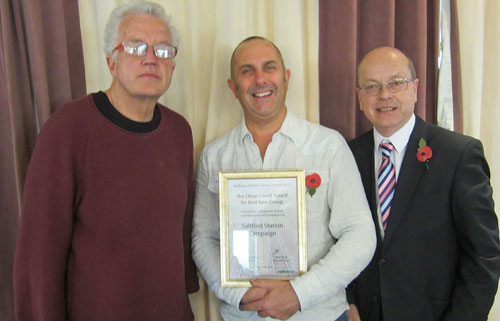
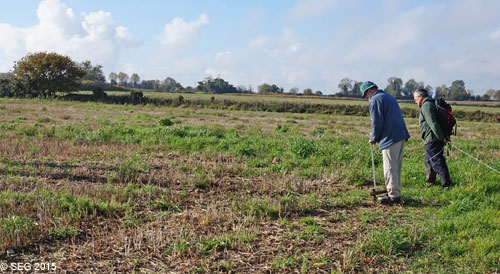
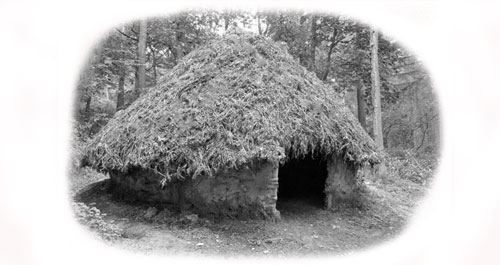
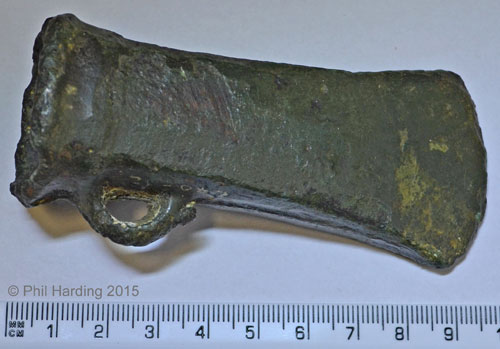


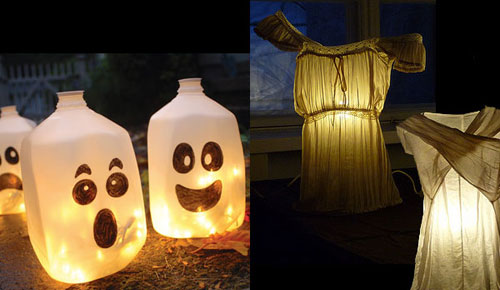
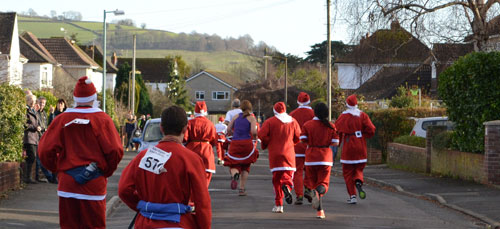
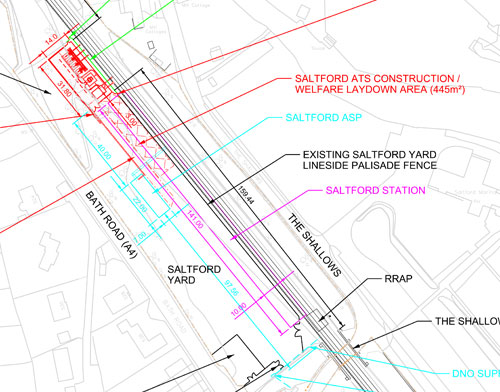
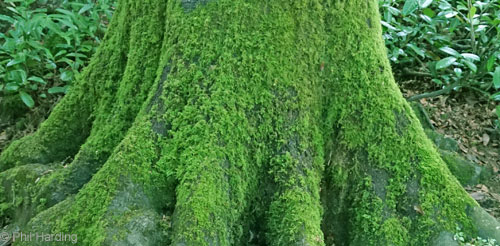
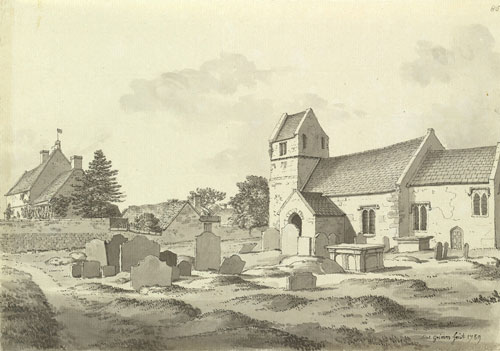
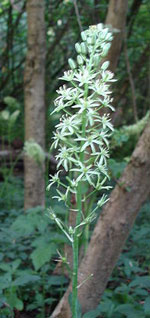 Members may recall that SEG distributed over 700 Bath Asparagus seeds to several of our members in 2013. After a poor growing season last year for this particular nationally scarce plant (also known as the 'Spiked Star of Bethlehem', Ornithogalum pyrenaicum), we are pleased to be able to offer some free seeds again to our members, subject to demand.
Members may recall that SEG distributed over 700 Bath Asparagus seeds to several of our members in 2013. After a poor growing season last year for this particular nationally scarce plant (also known as the 'Spiked Star of Bethlehem', Ornithogalum pyrenaicum), we are pleased to be able to offer some free seeds again to our members, subject to demand.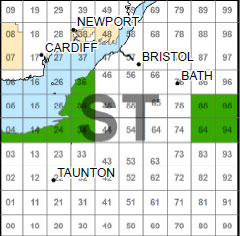
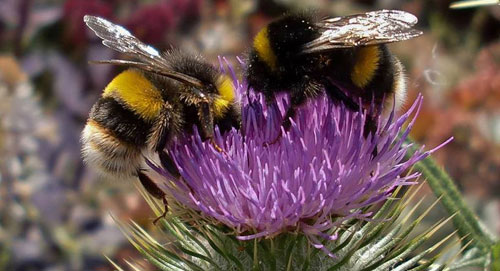
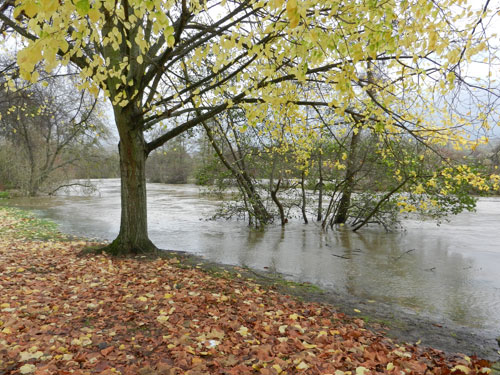
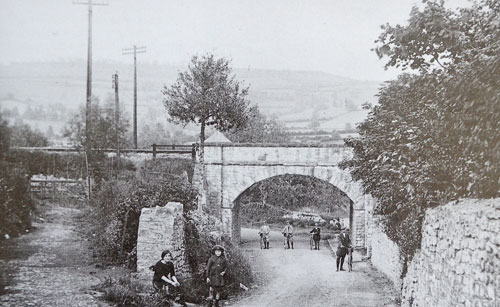
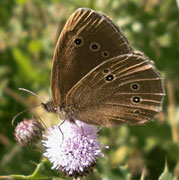
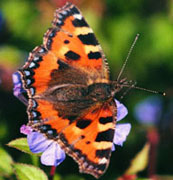
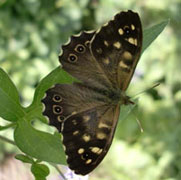
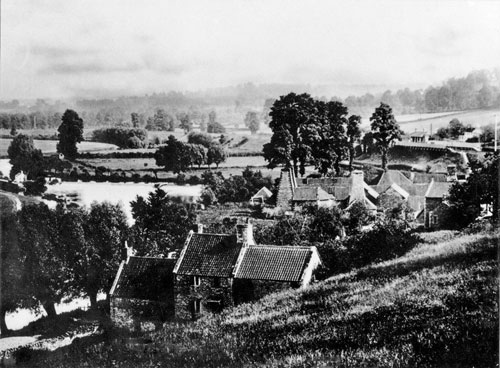
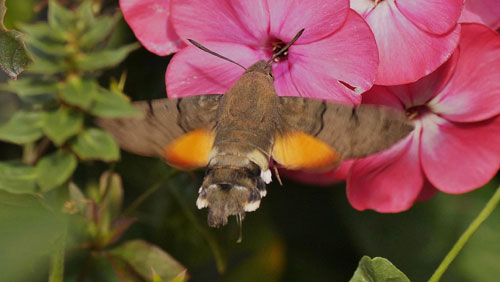
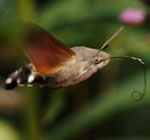 Two members of SEG have seen the Hummingbird Hawk-Moth in their gardens on the south side of Saltford this summer. This fascinating day-flying moth is worth keeping a watch for during warm sunny days.
Two members of SEG have seen the Hummingbird Hawk-Moth in their gardens on the south side of Saltford this summer. This fascinating day-flying moth is worth keeping a watch for during warm sunny days.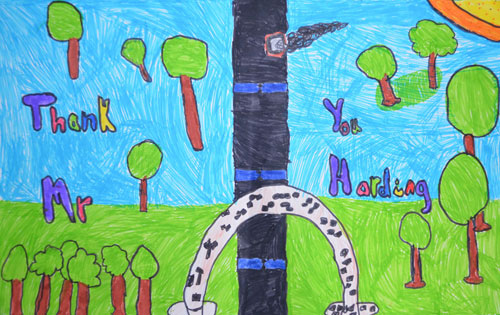
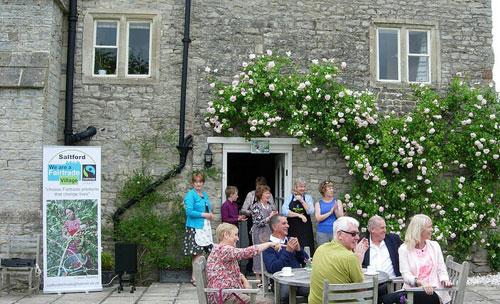
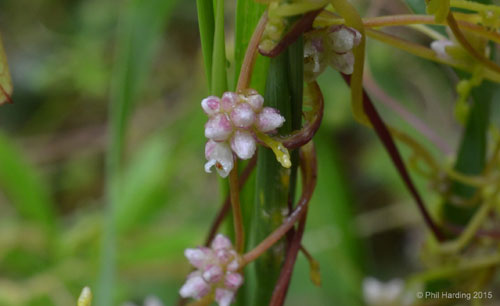
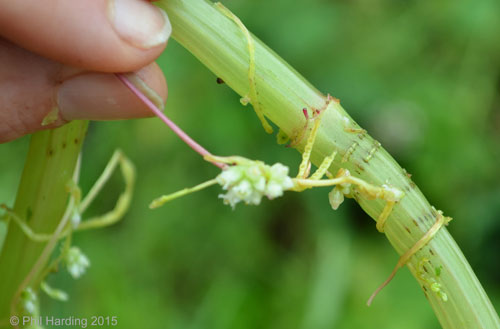
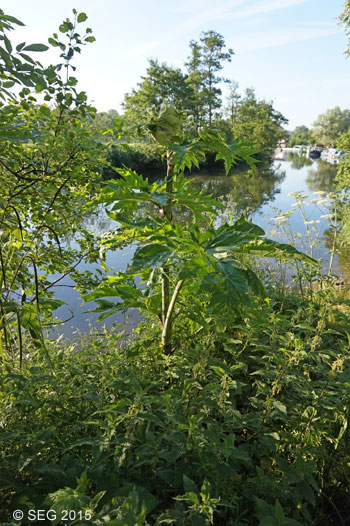
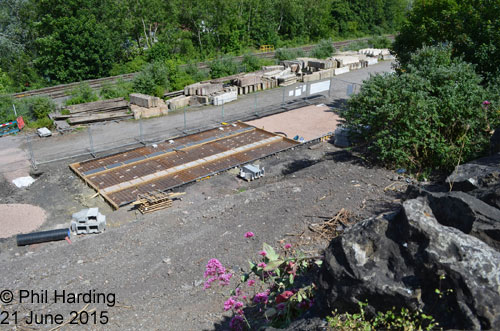
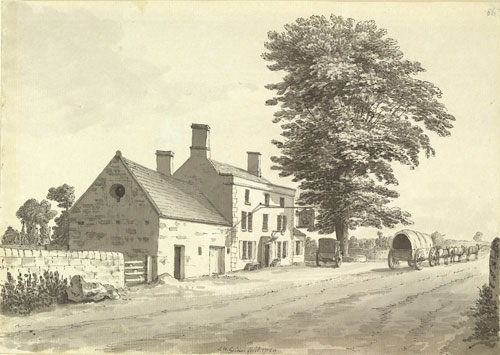
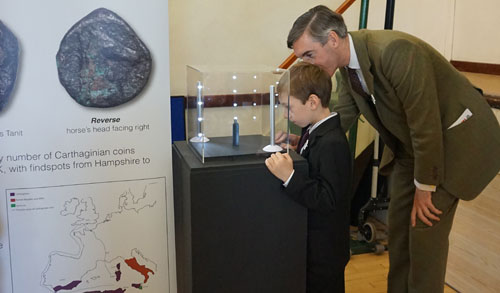
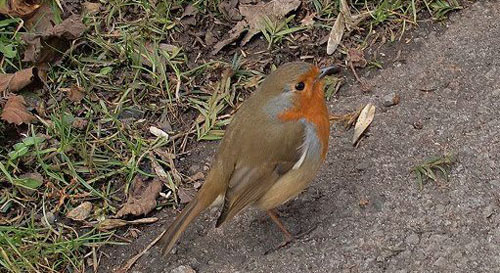
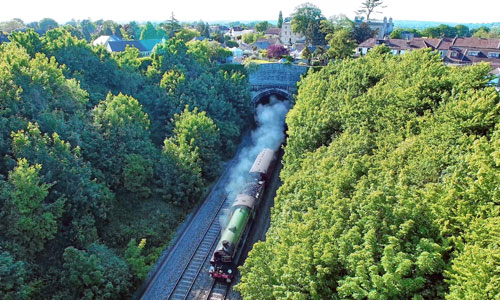
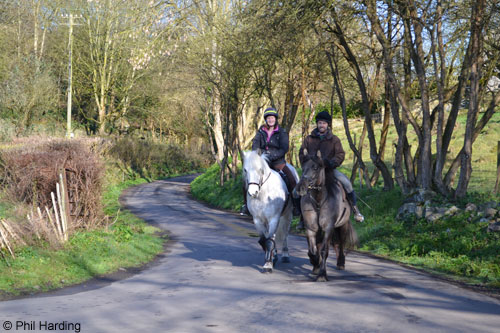

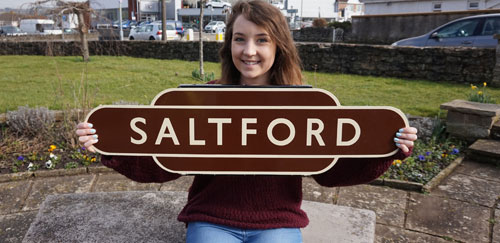
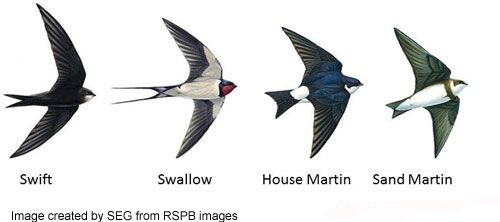
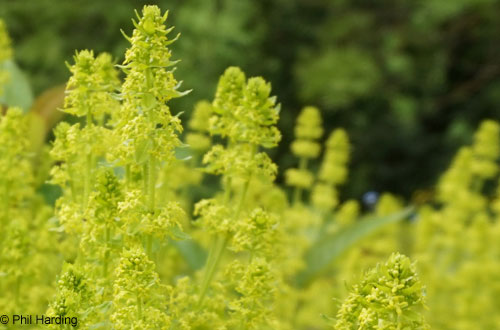
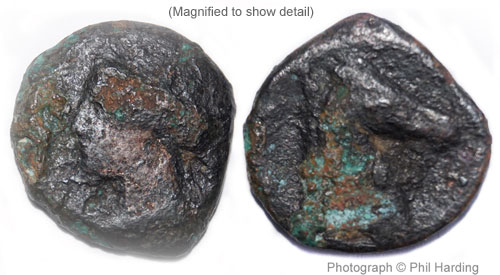
 The advice from the NHS is that if you do find a tick on your or your child's skin, remove it by gently gripping it as close to the skin as possible, preferably using fine-toothed tweezers, and pull steadily away from the skin (don't twist or jerk the tick; this can cause the mouth-parts to break off and remain in the skin).
The advice from the NHS is that if you do find a tick on your or your child's skin, remove it by gently gripping it as close to the skin as possible, preferably using fine-toothed tweezers, and pull steadily away from the skin (don't twist or jerk the tick; this can cause the mouth-parts to break off and remain in the skin).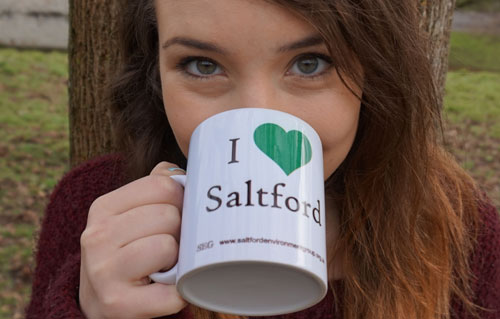

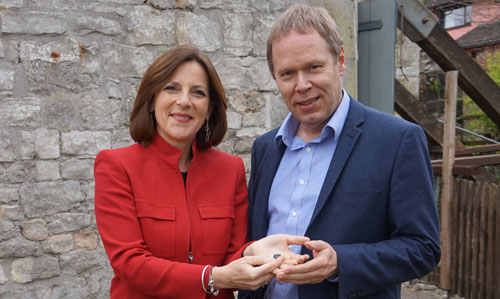

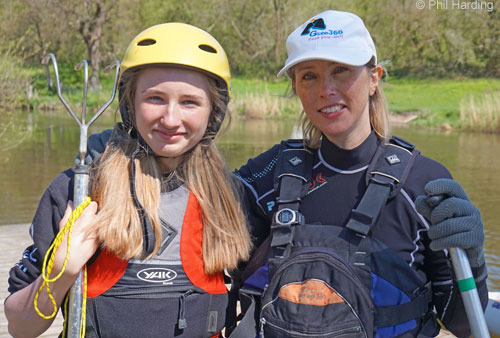
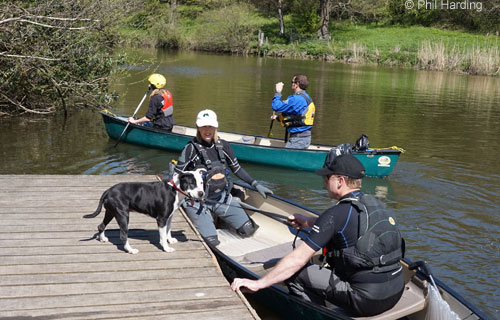
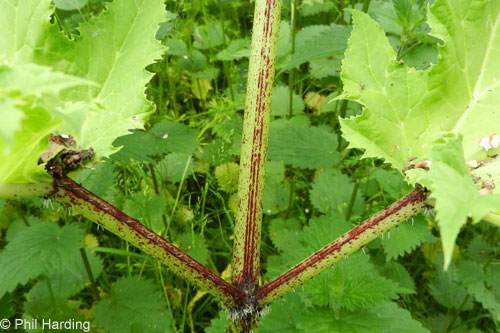
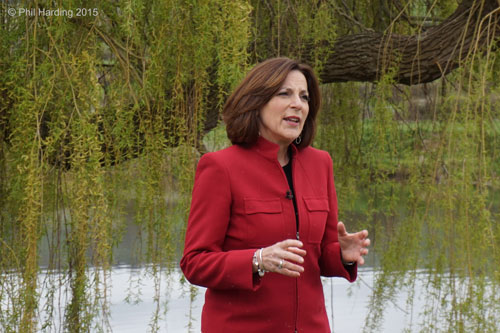
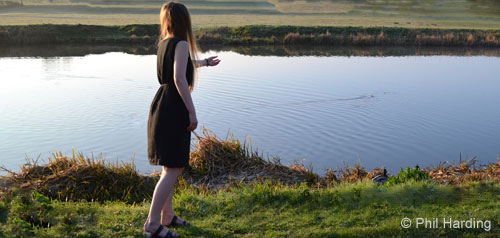


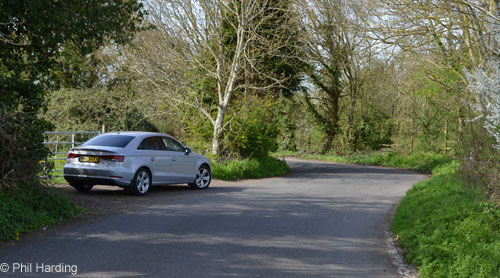
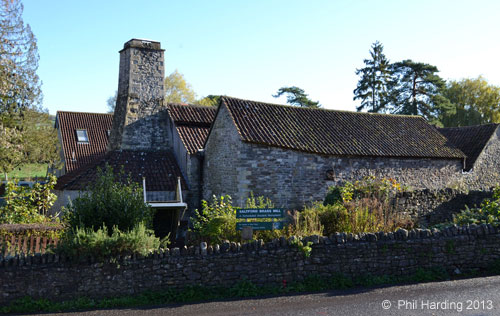
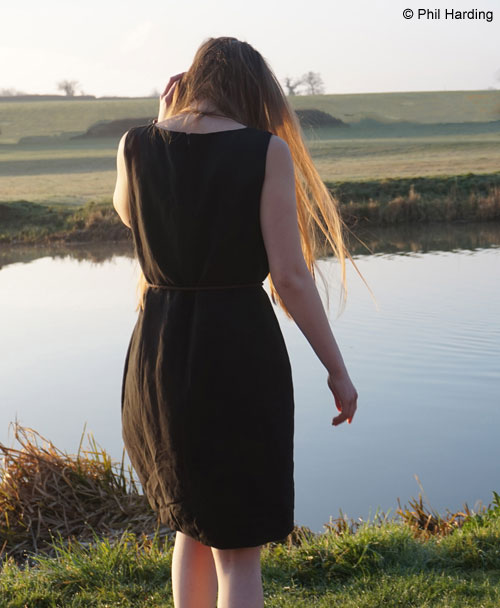
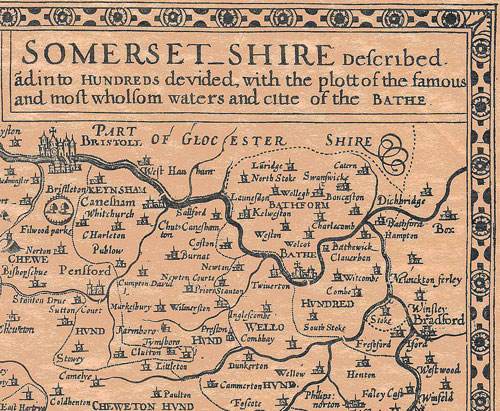
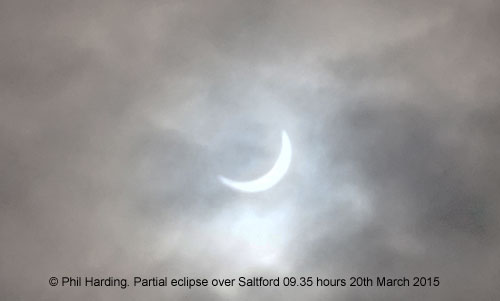
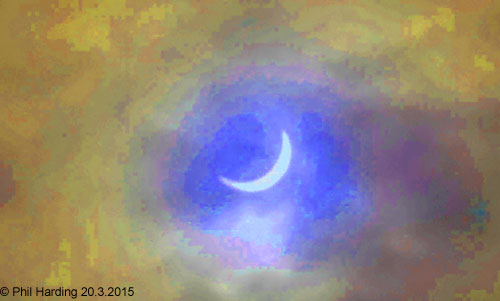
 We understand that the installation of 20mph speed limit signs in Saltford has been scheduled to commence on Monday 30th March. Initial works will include erection of posts, followed by fixing of signs and then road marking roundel placement.
We understand that the installation of 20mph speed limit signs in Saltford has been scheduled to commence on Monday 30th March. Initial works will include erection of posts, followed by fixing of signs and then road marking roundel placement.
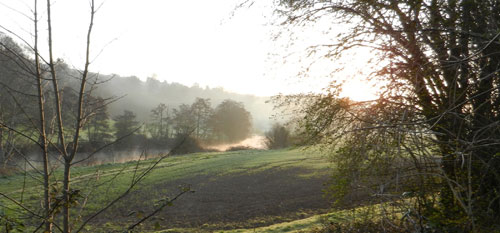

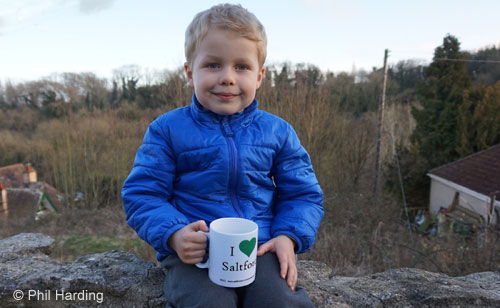
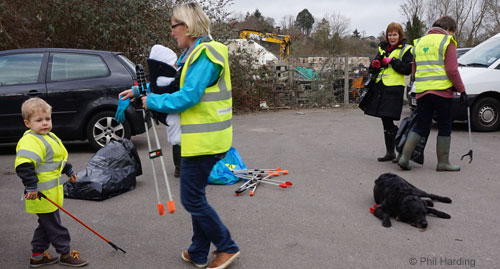
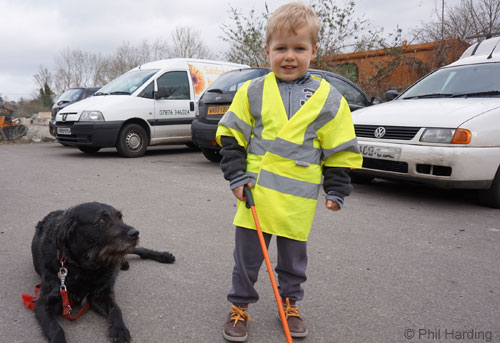

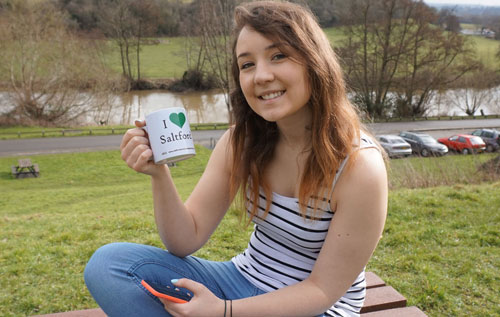
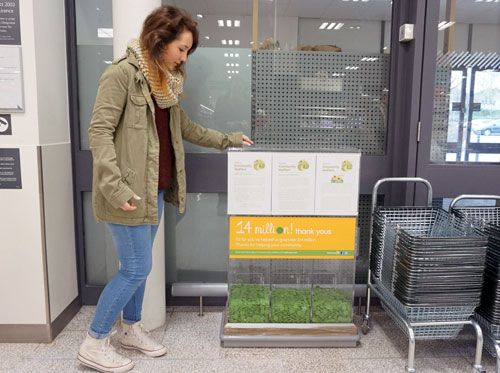
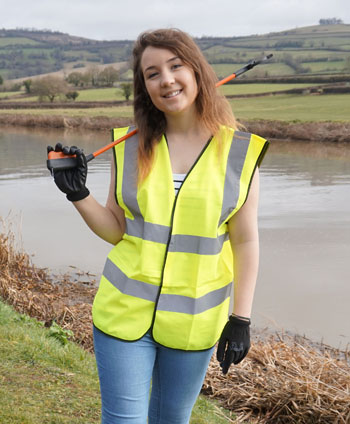
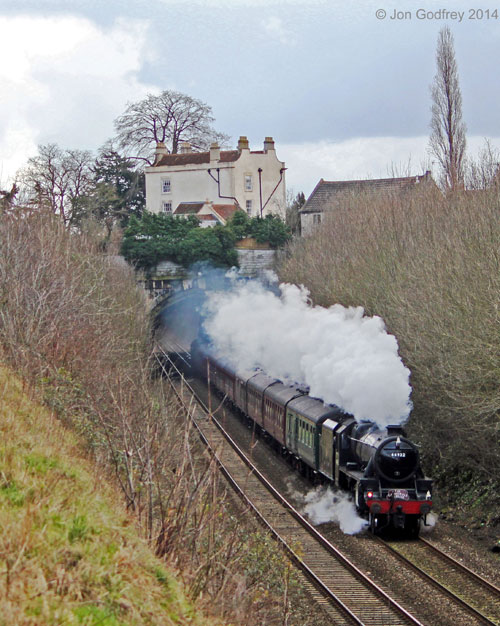
 Speed cameras across Avon and Somerset started to be switched back on from Wednesday February 11 when the first was re-activated on the A4 at Bath Road Hill in Saltford. It marks the beginning of a road safety project that will see a total of 29 static cameras become operational again for the first time since 2011. They were switched off when Government funding was withdrawn for the joint local authority and police Safety Camera Partnership.
Speed cameras across Avon and Somerset started to be switched back on from Wednesday February 11 when the first was re-activated on the A4 at Bath Road Hill in Saltford. It marks the beginning of a road safety project that will see a total of 29 static cameras become operational again for the first time since 2011. They were switched off when Government funding was withdrawn for the joint local authority and police Safety Camera Partnership.